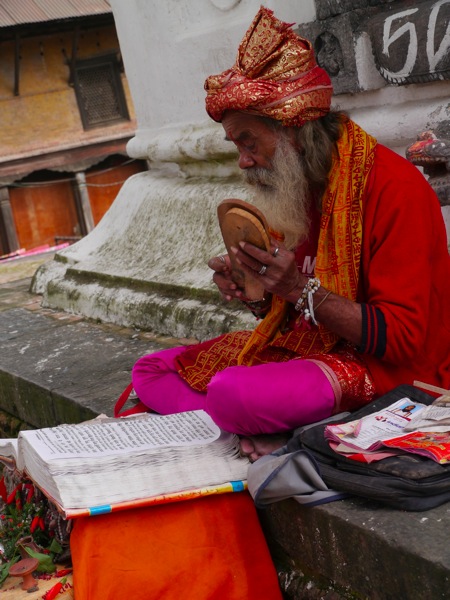Fast and Furious, Tokyo Trip
We were a bit nervous to visit Tokyo. We weren't even going to go to Tokyo, but Steve really wanted to spend a night near Mount Fuji so we made the plan to visit Tokyo afterwards, which is nearby. We didn't end up going to Fuji, but Tokyo was definitely still happening. We were worried because everyone we had met in Japan had warned us that Tokyo was chaotic and a 'crazy place'. So, we envisioned streets with thousands of people, train cars packed like sardines, and noise to burst ear drums. We were picturing Times Square in New York, magnified by 20 percent or more. It turned out that, though Tokyo may be crazy and hectic to the people of Japan, to some well traveled Americans, who are used to big cities, Tokyo was quite peaceful for such an immense city. The skyscrapers jut into the black night sky, and bullet train tracks loomed high above our heads, weaving in and out of buildings, but even on a busy Saturday night, in an area with many clubs, bars and restaurants, there was still a sense of organization and calm. The streets were wide, allowing you to see the stars, and the sidewalks proportionally wide, so you could walk side by side without a problem. Plus, the culture of the Japanese people is to respect others and their space, so you never felt like you were being crushed.
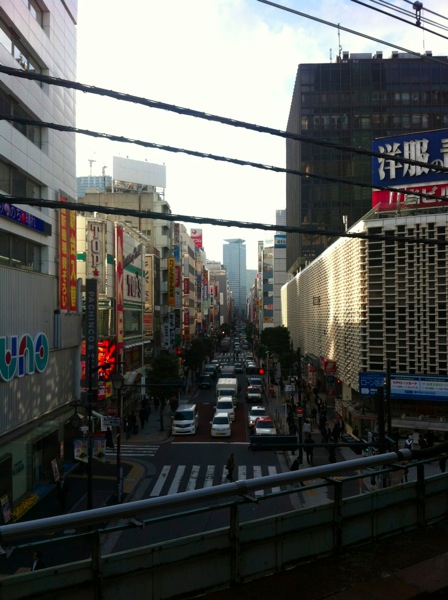
But, let's back up a little bit. The Shinkansen ride from Kyoto to Tokyo was a treat. We bought bento boxes for lunch, along with an array of sweets to keep us busy. They went well with our Asahi Super Dry beer. The Bullet Train takes you through some interesting countryside and towns. We eventually came upon Mount Fuji. Though it was mostly obscured by clouds, Seth and I caught a glimpse of its snowy top during a break in the clouds. It towers above the mainly flat countryside surrounding it.
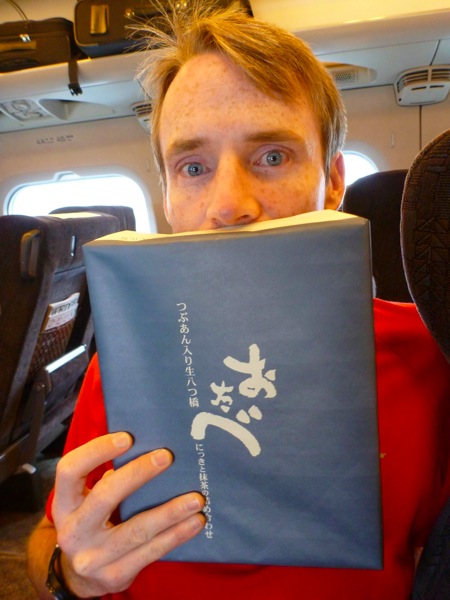
After a mix up with hotel recommendations and dollar conversions, we ended up staying at a pretty posh hotel in the Ginza area of Tokyo. Apparently the Ginza area is the place known for upscale shopping, bars, clubs, and restaurants. Most importantly, it is about a five to ten minute walk from the Tsujiki Fish Market. This is the famous fish market in Japan that has the large tuna auctions in the wee hours of the morning. Our new friend, Kazuma, met us at our hotel at 3:50am to escort us to the market. We were there by 4am and we were one of the last few of people to make it into the first group of 60 to view the auction. We stood in the 'holding room' until about 5:30am until they herded us over to the auction room. It was eerily quiet as we entered, aside from the shuffling of tourist feet on cold, wet cement. All around our little path through the center of the auction room were large frozen tuna, with potential buyers inspecting the little flaps cut on the tails. Eventually a bell began to ring and one or two at a time auctioneers began selling off the fish. I couldn't follow much other than the body language, and that meant watching for people who slightly raised their hand while the auctioneer did his bit. At the end of a round of auctioning, men in tall rubber boots would mark the sold fish with some kind of red 'paint' and another would take a large hook and drag it away.
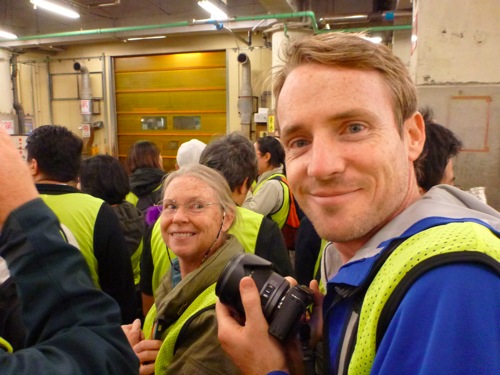
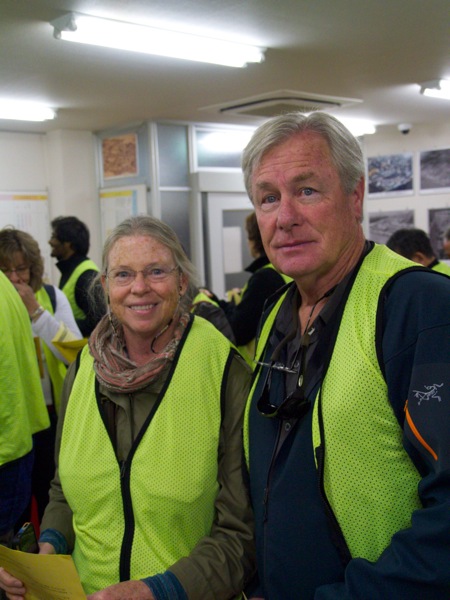
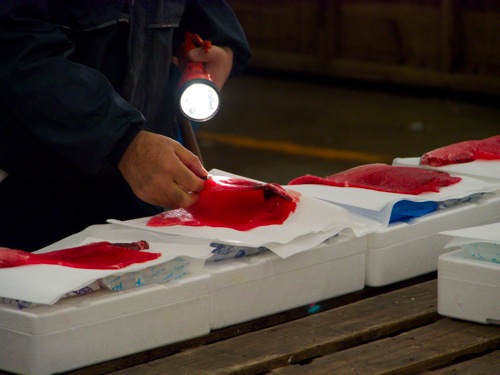
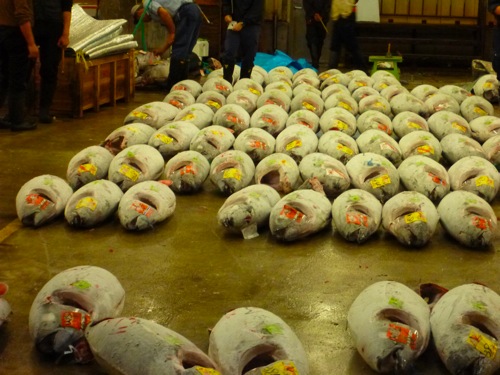
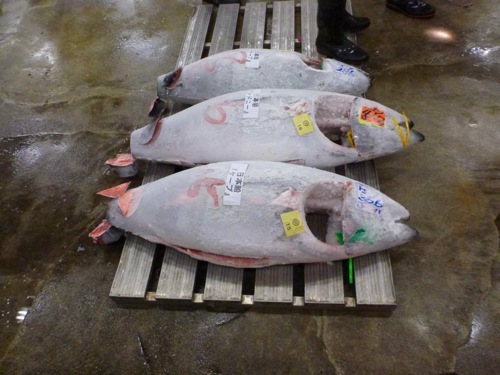
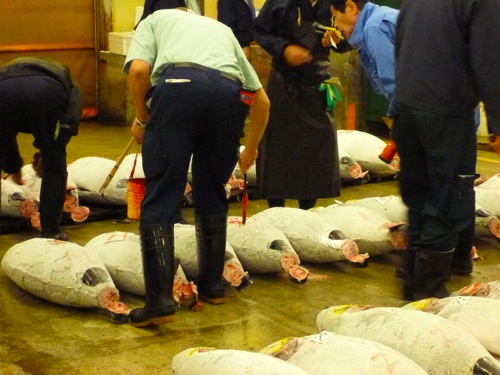
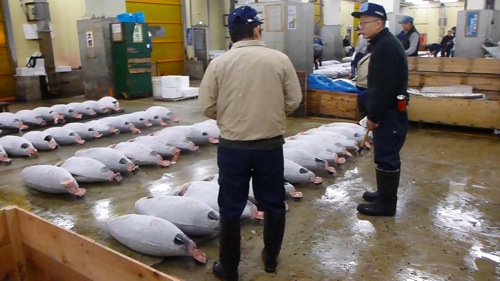
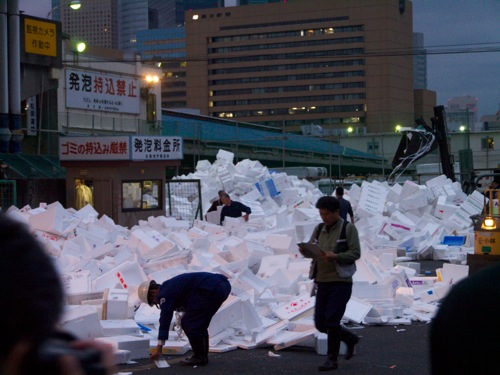
Afterwards was the best part ever. We made our way to Kazuma's recommendation sushi restaurant. We waited in a line for about 20 minutes before being ushered in to a narrow room with a sushi bar. This was to be my best sushi meal of my life. I doubt I will ever be able to duplicate that experience. Daiwa Zushi had fish as fresh as you can get it, if you are not living on a fishing boat. The restaurant is in the fish market and it was about 7am. If I could have that sushi for breakfast on a regular basis it would be amazing. The pieces of sushi that surprised me were the squid (ika), sea urchin (uni), and salmon roe (ikura) sushi. These are sushi I'm not normally a big fan of. Squid sushi is usually quite chewy, but this was crisp and buttery, and so delicious. Though the sea urchin was still not my favorite, it was obviously quite fresh and had less of a stinky sea water taste. The salmon roe had the greatest difference in flavor of any salmon roe I have ever had. I frequent some pretty awesome sushi bars in LA and normally salmon roe tastes like little capsules of thin ocean water. These had a more viscous texture and a salty, yet sweet, flavor. It was so good I was tempted to buy a carton and eat it with a spoon!
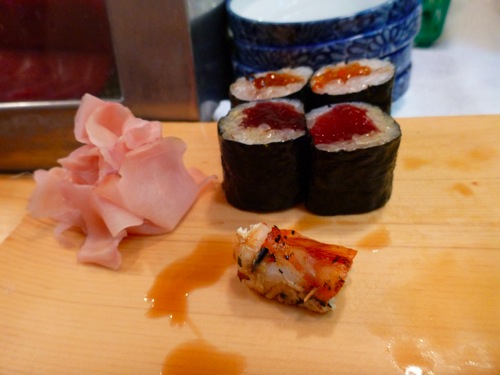
Kazuma was not done with us yet, oh no! He was nice enough to shuttle us all around Tokyo. Throughout our stay he was such a great host, always making sure we were having a good time. That day we ended up going on a walking tour of Tokyo, it seemed. We walked around Harajuku to see all the weird fashions, and they were quite odd. I don't know if you would call all of them fashionable. It was kind of how you see photos or video footage of runway models and think, "yeah, but there's no one in their right mind who would wear that in public." Well, we were all wrong. The people who hang out in the Harajuku area wear those crazy outfits.
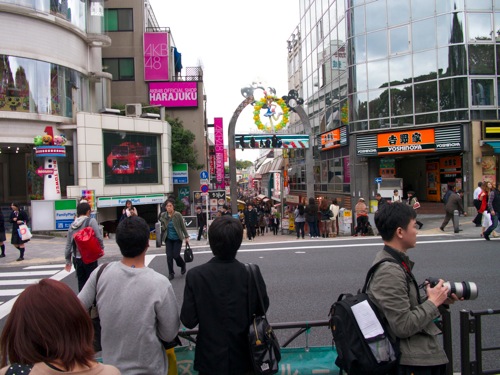

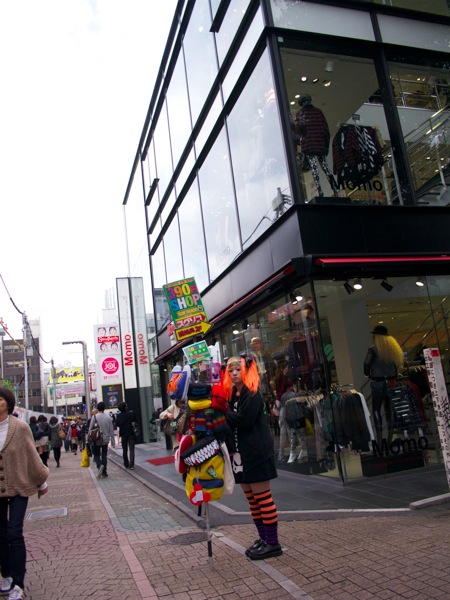
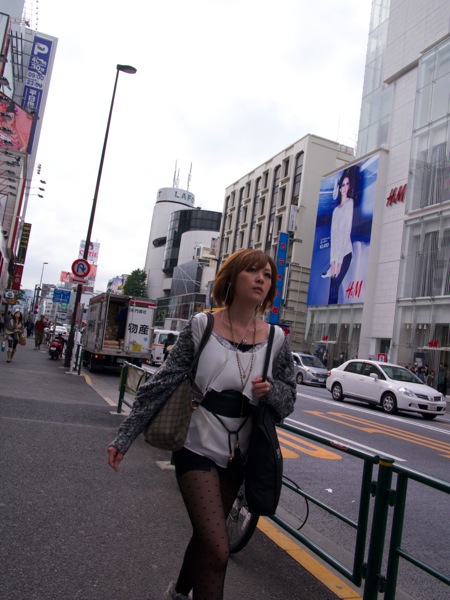
We also made it to the Shibuya intersection. It's right next to Shibuya Station which is Tokyo's busiest rail line. All the lights at the intersection turn red so people can cross at any angle. It was interesting to watch the ebb and flow of the traffic.
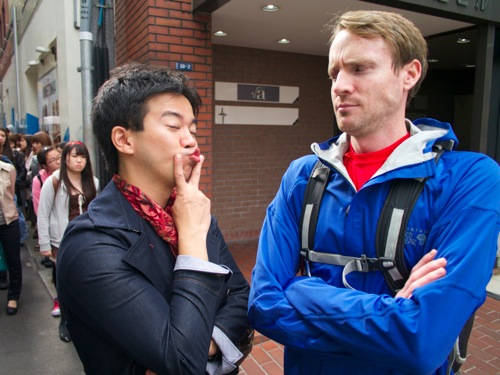
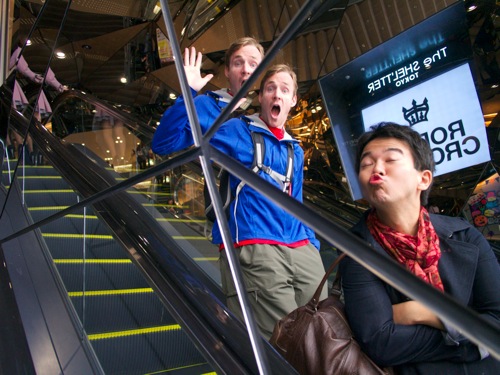
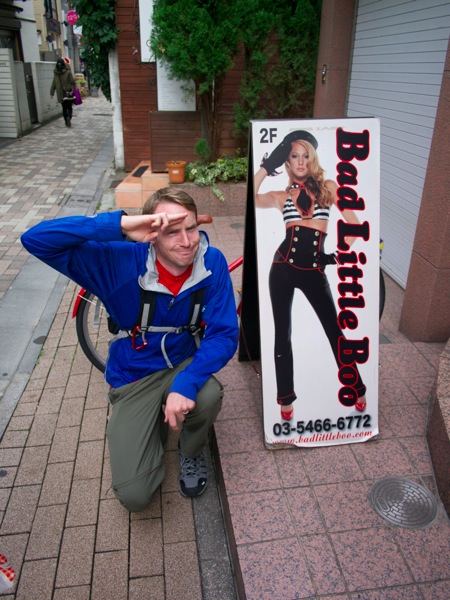
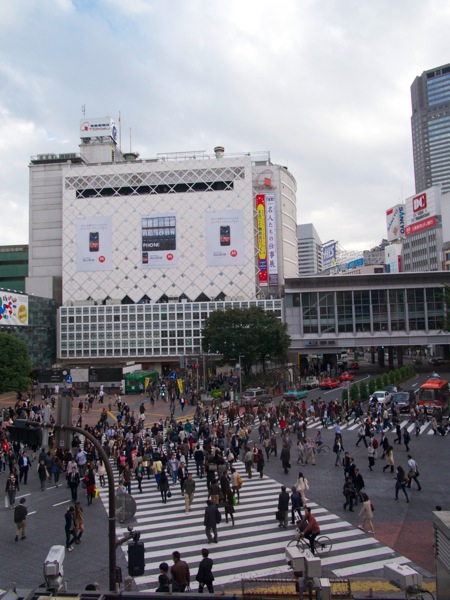
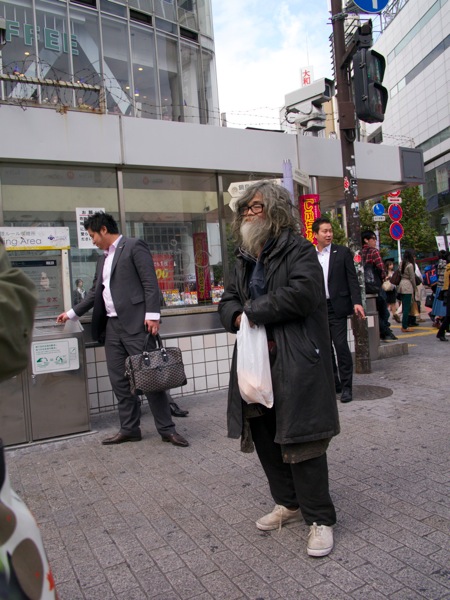
That evening we went on a cruise of Tokyo Harbor. It was a very nice view to watch the sun set on the water with the Tokyo skyline in the background.
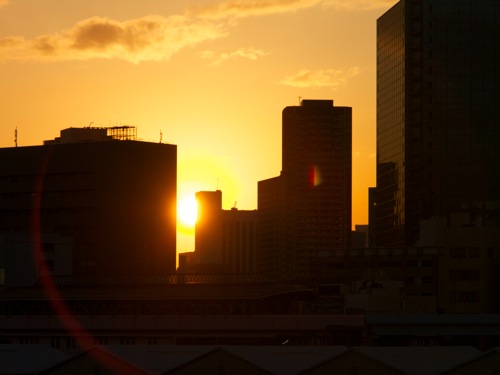

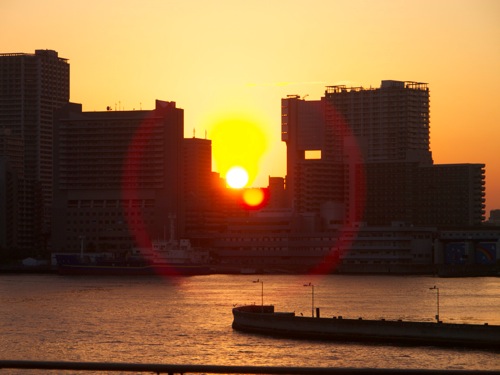
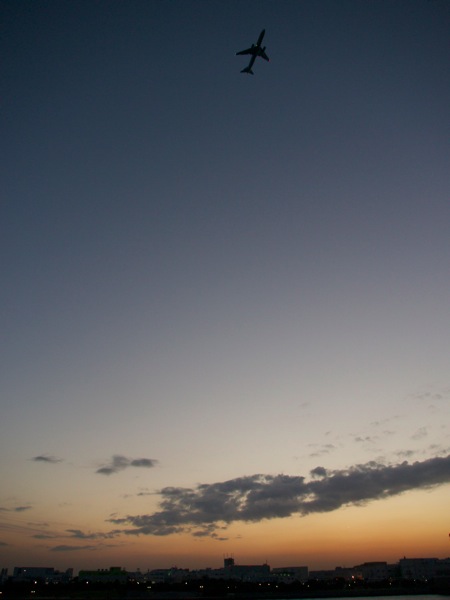
That night Kazuma took us to eat yakitori. He wanted us to try yakitori style food, and while we were there try some yakitori'd organs. And he wanted us to meet some of his friends. Well, we did all of it. Though we tried a bunch of organs (heart, liver, tail, spleen, skin) the tastiest was the cartilage. I think I'll stick to meat from now on. The best part was talking with Kazuma and his friends. It was interesting to begin to get a picture of young Japanese people and exchange stories about life and traveling.
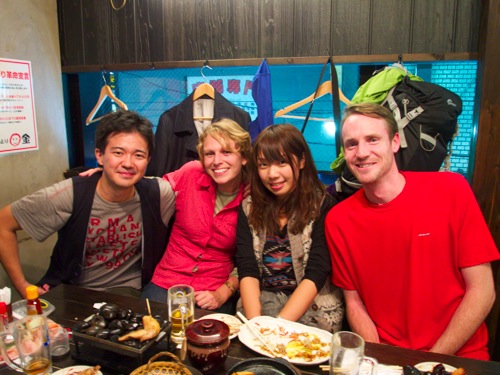
The next day we let Kazuma sleep in. He had shown us around for close to a full day and we needed him to rest up! Anyhow, for those of you who know me, you know I'm a bit of a Disney fan. I was quite tempted to visit the Tokyo Disney park. I wouldn't have gone to the Magic Kingdom, because it's about the same wherever you are, but they have a second park called Tokyo Sea. But, that wasn't on the agenda. What was on the agenda was hitting up the disney store just off the metro line to the Disney park. I found some pretty kick ass pins for trading when I get back to the US. Something interesting I found out was that pin trading was banned at Tokyo Disney because the traders were going overboard and were clogging up pathways and foot traffic couldn't pass. The Japanese are collectors, so I see how this could have happened. There weren't many pins, but of the ones that were there, I purchased many of them. Watch out Disneyland, here I come! And I'm armed with Tokyo pins!!
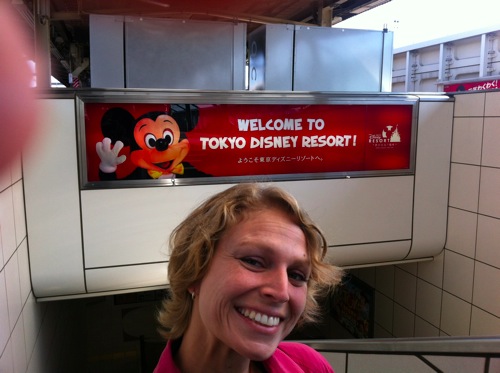
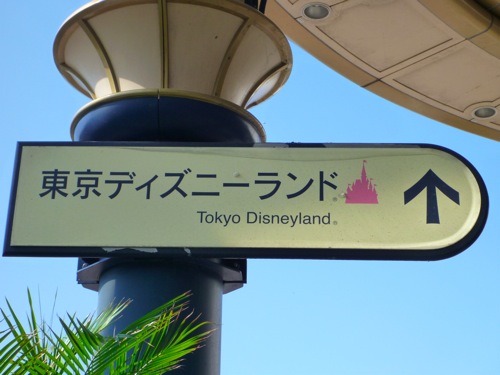
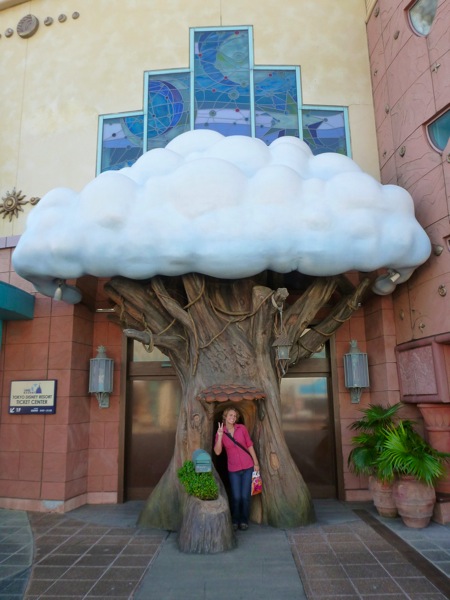
We met Joan, Steve, and Kazuma back at the hotel, then made our way to share a delicious lunch of BBQ eel over rice. Man oh man that was good. After we were sated with our sea snakes, we went to collect our fast pass like cards to visit the Tokyo Sky Tree (speaking of Disneyland…). But, we couldn't make our way in just yet, so we went to the nearby Asakusa temple area. The Asakusa temple is surrounded with shops and we browsed the stalls on our way. The temple was nice to see, but the highlight, kind of, was getting our fortunes. You pull a stick out of a metal canister and pull out a fortune from a drawer with a number that matches your stick number. Though Seth and Kazuma received ok fortunes, Steve got the winner, and Joan and I didn't fare so well. The fortunes were painful, but we tied our bad fortunes to a metal pole, gave an offering, made a prayer, and washed away our bad fortune with incense, therefore leaving the bad fortune behind. We were able to leave with a clear conscience.
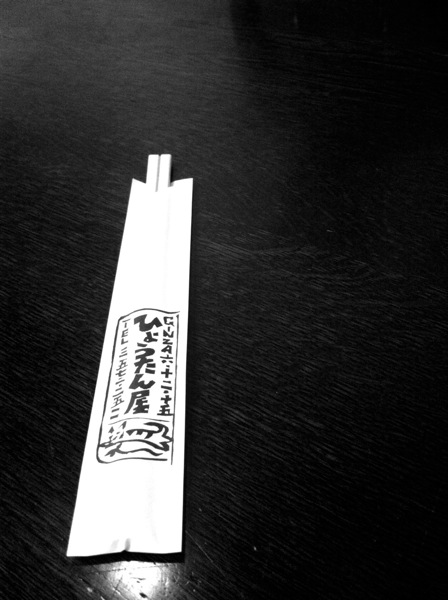
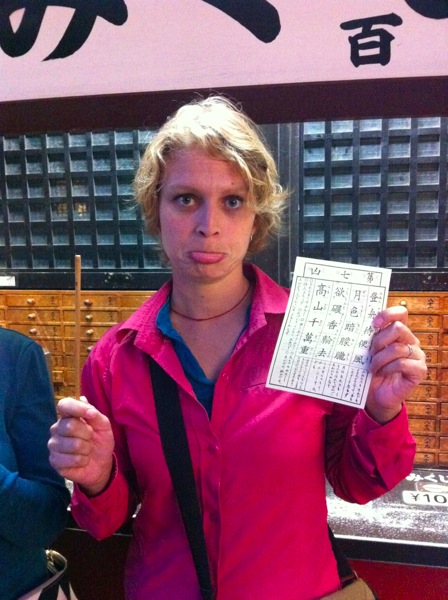
It was time to make our way back to the Sky Tree. At 634 meters tall (2,080.05 feet), the Tokyo Sky Tree is the second tallest building in the entire world, and the tallest freestanding broadcasting tower in the world. The viewing deck isn't exactly that high, but we were as high as we'd ever been while being anchored to the ground. It was pretty spectacular. And the night view of the city was amazing.
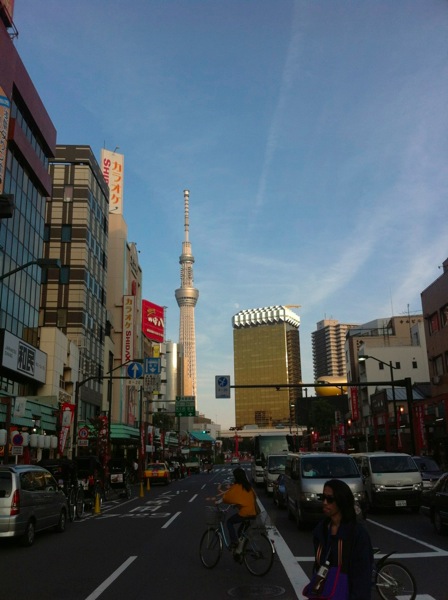
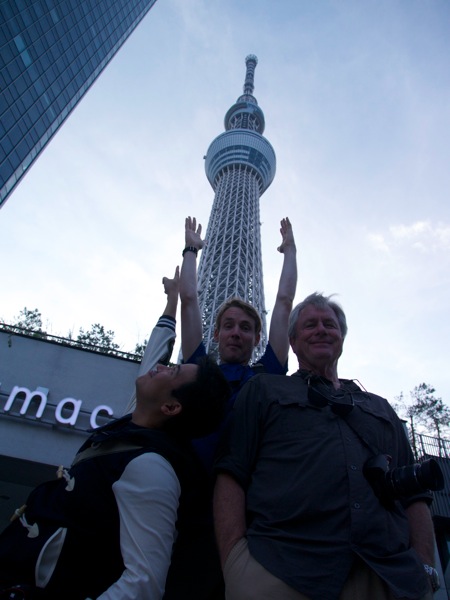
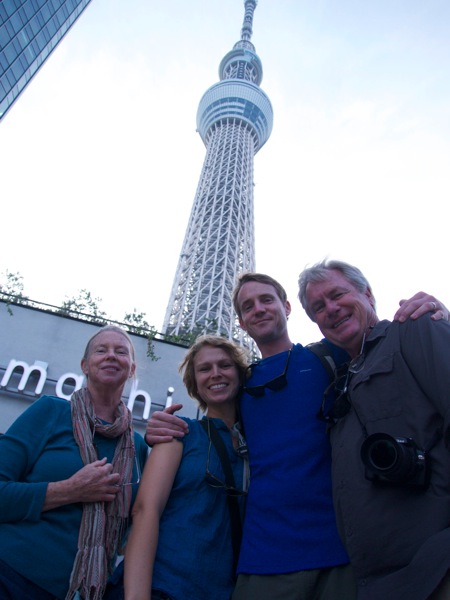
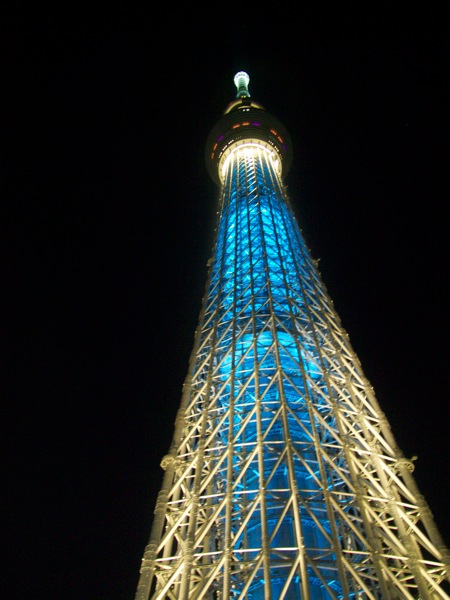
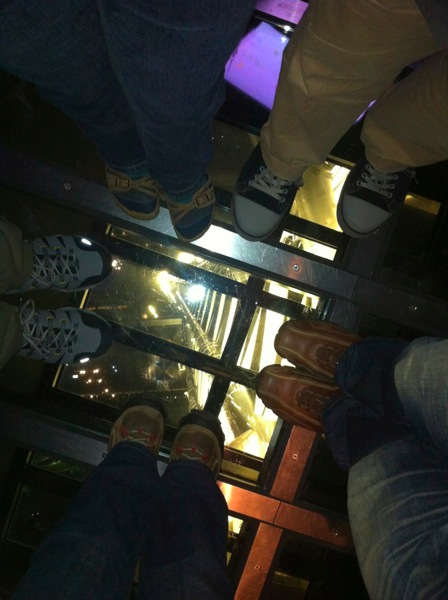
That night Kazuma had more festivities planned. Joan and Steve called it a night after a long day, but Seth and I headed out to an izakaya, or traditional Japanese pub. Apparently it is quite normal for people to meet up at an izakaya after work to eat, drink, and complain about their bosses. We were there to eat, drink, and just have a good time! Kazuma wanted us to meet more of his friends, and once again, it was really nice to meet with them. The food was different and quite tasty, especially because we weren't eating mainly organs, though there was some cartilage.
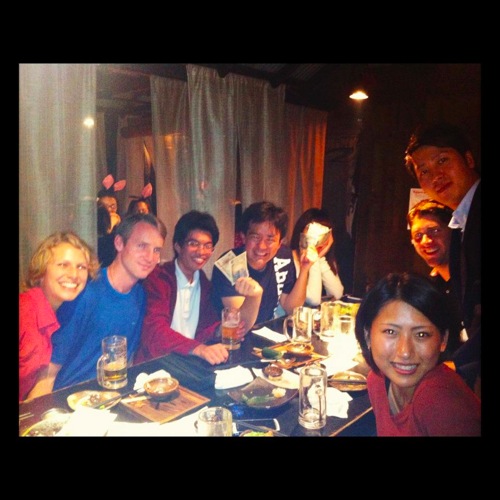
The next morning we bid Joan and Steve a bittersweet farewell. It was nice to spend time with them, but they were missing home. Afterwards, we met up with Kazuma to make our way to a party he was throwing for us. Though it was a party partially for us, it was, also, a Halloween party. We spent the evening with Kazuma and his costume clad friends. There was beer, a DJ, and Seth taught some Japanese girls how to make takoyaki. The majority of people at the party happened to be international students studying in Japan. We met a few people from California, Texas, Russia, Germany, China, and more. It was really informative to get their respective insight in living in Japan, a country so different from their own, and ours.
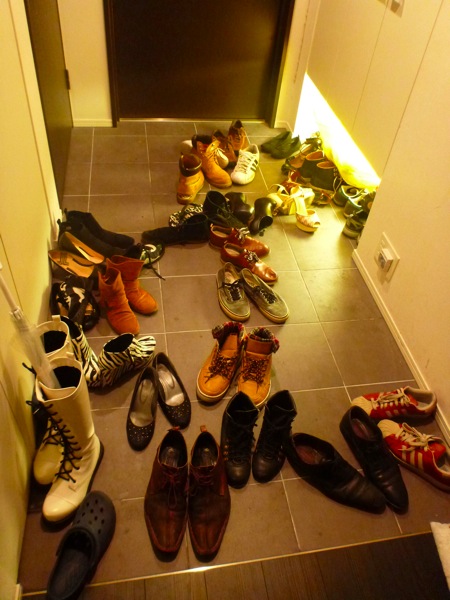
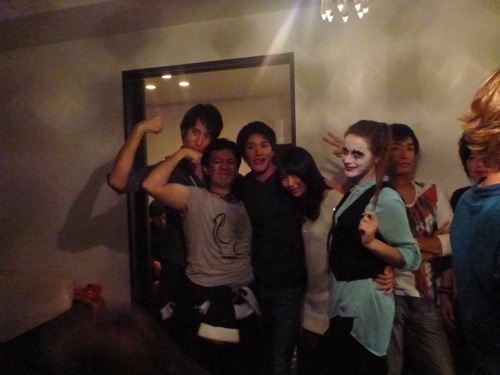
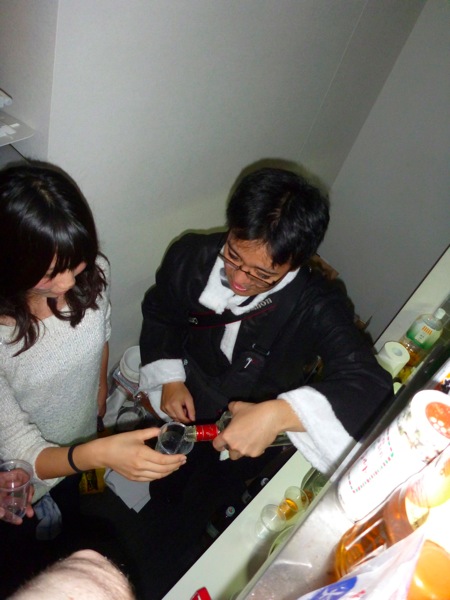
The next morning it was time to say good bye to Kazuma. We really hope that someday we can show him the same hospitality he showed us while we were in Tokyo. He really was a great friend to us.
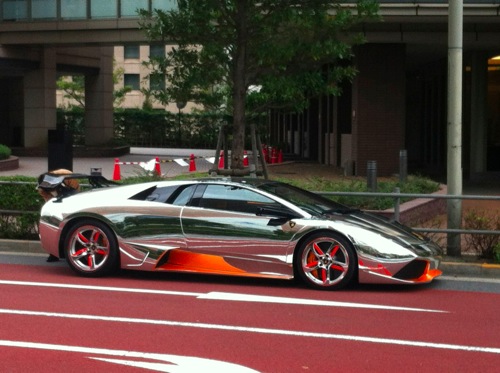
At the train station we bought some delicious munchies for the ride and headed back to Osaka for our last night in Japan.
We stayed in a different area of Osaka, but it was nice to see a different part of the city. Our hotel was nice too. It was like a little apartment, and we were able to use the laundry machines downstairs. It's such a plus when a hotel has laundry access. Though washing clothes in the sink will get you by, there's nothing better than machine washed clothing with detergent rather than hand soap or shampoo.
We were intent to find the okonomiyaki restaurant that Minako had taken us to, but it turned out that we were mistaken on its location. But, thanks to CNNgo.com, Seth found a great place where we had our last okonomiyaki, at least for a while. We, also, made sure to grab some takoyaki, so that we could burn the roofs of our mouths off before we left for Thailand. But, it was so good!
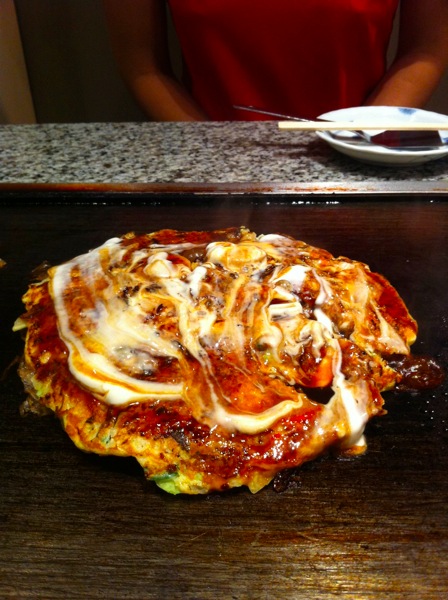
The plan the next morning was to make it to the airport three hours before our flight so that we could get a final Japanese meal, and do a little shopping in the airport. We even had our meals picked out. Seth wanted omrice, which is a perfectly cooked omlette over rice, doused in a clear, salty, clean tasting sauce, while I was looking forward to oyako (literally translated to parent and child), which is eggs and chicken over rice. So, we arrived to the airport three hours early only to be told that our flight time was bumped up, and we had to make a mad dash to the plane. Therefore, we had to forgo breakfast and shopping. This put a real damper on our morning. Luckily they feed you on the plane. Sadly, it was the smallest meal yet. Though we were left hungry, they gave us booze, so that helped. We finally landed in Thailand..
Japan the Gastric Paradise
The title says it all, Japan is a food paradise. It's home to some of the freshest fish and tastiest seafood I've ever had. The Japanese strive for perfection in their dining. It's not uncommon to find a restaurant in Japan that serves only a single dish. Barbecued eel, gyoza, soba, tea, sushi, the list is nearly endless. When striving for the perfect meal they consider everything, I mean everything, the metal that is used to make the knife that cuts the ingredients, the shape of tea pot, the type of coal the meat is grilled over, not to mention the freshness and quality of the ingredients. It's apparent the moment you walk into a market or past a produce vendor, these veggies are gorgeous, seasonal, and as close to perfect as you will ever see. The beef is exceptionally marbled, the eggs have deep orange yolks, the grapes are enormous, plump, and sweet. These ingredients in the hands of a caring Japanese chef made for some of the most exceptional meals of my life. Rather then continue to gush about the food i'll cut to the chase and show you the photos.
[caption id="" align="alignnone" width="448"]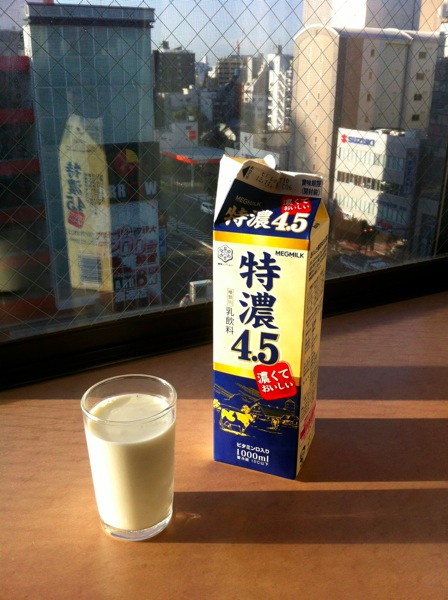 I'd like to introduce you to the worlds greatest store bought milk.[/caption]
I'd like to introduce you to the worlds greatest store bought milk.[/caption]
[caption id="" align="alignnone" width="448"]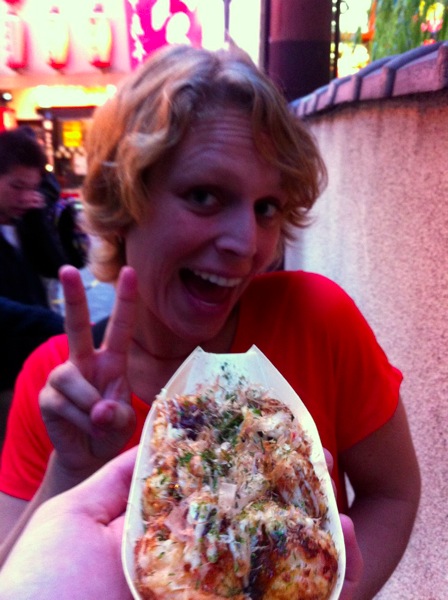 Our last takoyaki in Osaka :([/caption]
Our last takoyaki in Osaka :([/caption]
[caption id="" align="alignnone" width="448"]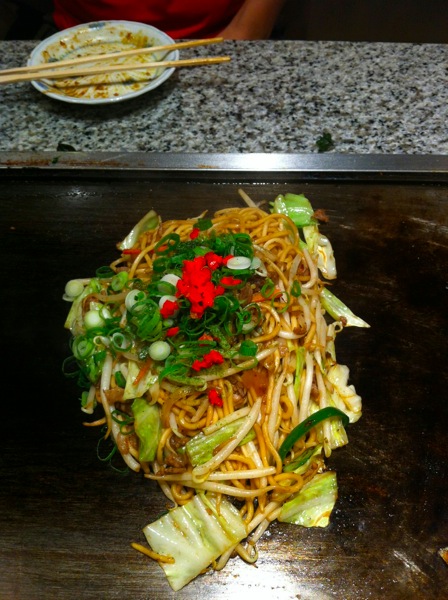 Yakisoba in Dontonbori Osaka[/caption]
Yakisoba in Dontonbori Osaka[/caption]
[caption id="" align="alignnone" width="448"]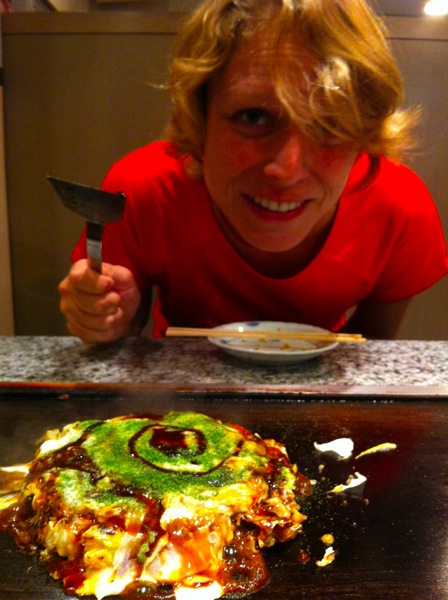 Yamoyaki, sweet potato yaki. yummy![/caption]
Yamoyaki, sweet potato yaki. yummy![/caption]
[caption id="" align="alignnone" width="448"]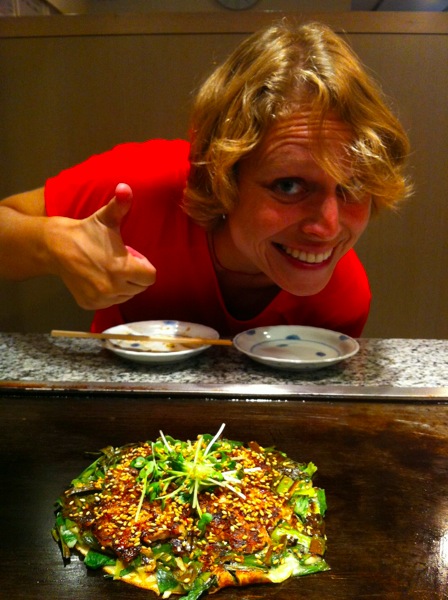 Leek okonomiyaki, crisy and crunchy.[/caption]
Leek okonomiyaki, crisy and crunchy.[/caption]
[caption id="" align="alignnone" width="448"]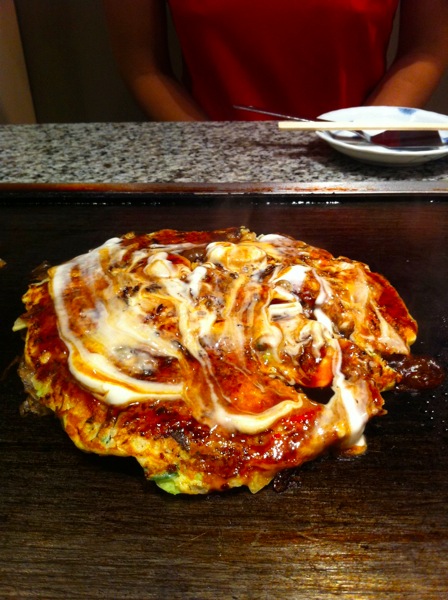 The grand daddy of yaki, okonomiyaki![/caption]
The grand daddy of yaki, okonomiyaki![/caption]
[caption id="" align="alignnone" width="448"]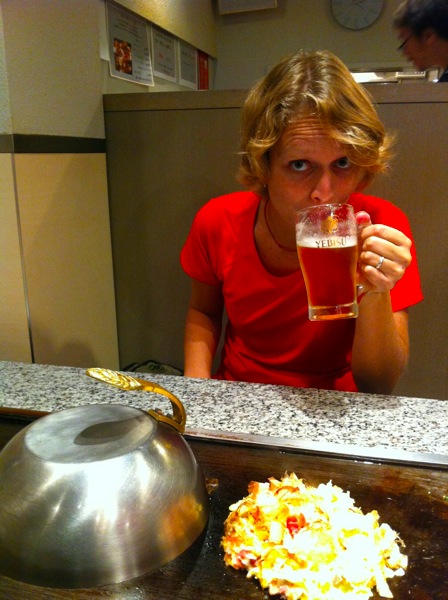 Our last attempt at kuidore.[/caption]
Our last attempt at kuidore.[/caption]
[caption id="" align="alignnone" width="500"]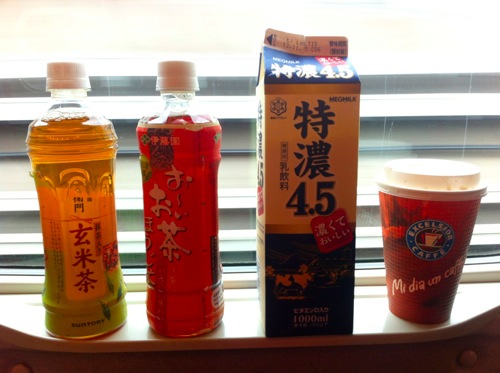 A force to be reckoned with, tea, tea, milk, coffee, on a bullet train.[/caption]
A force to be reckoned with, tea, tea, milk, coffee, on a bullet train.[/caption]
[caption id="" align="alignnone" width="448"]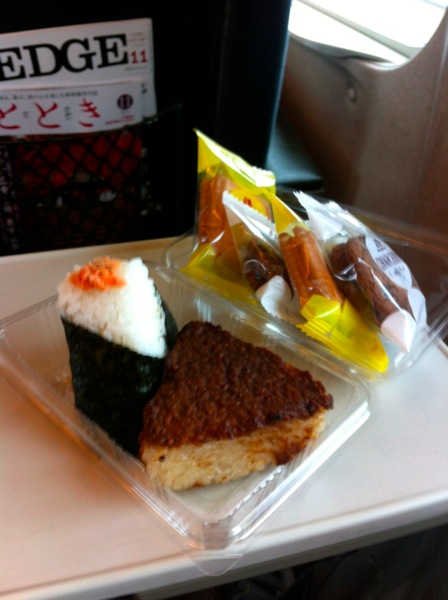 Train food fail..[/caption]
Train food fail..[/caption]
[caption id="" align="alignnone" width="450"]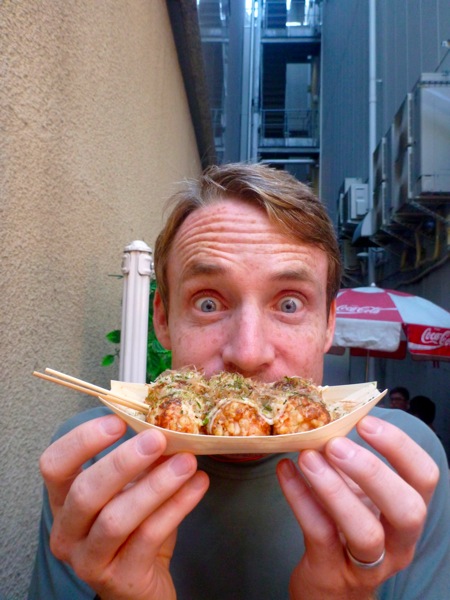 Takoyaki smile[/caption]
Takoyaki smile[/caption]
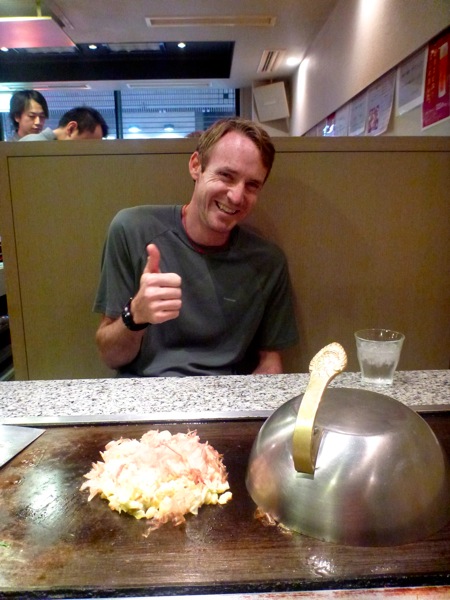
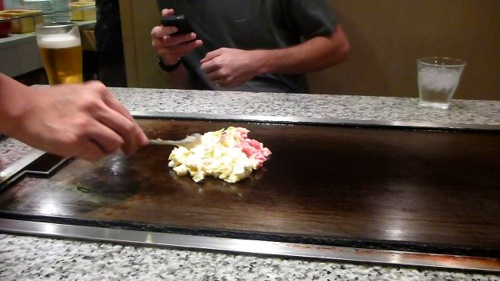
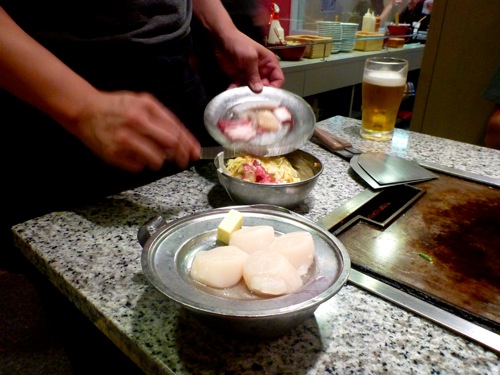
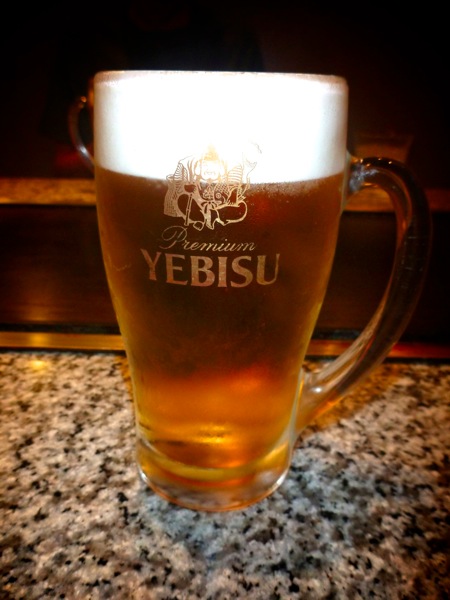
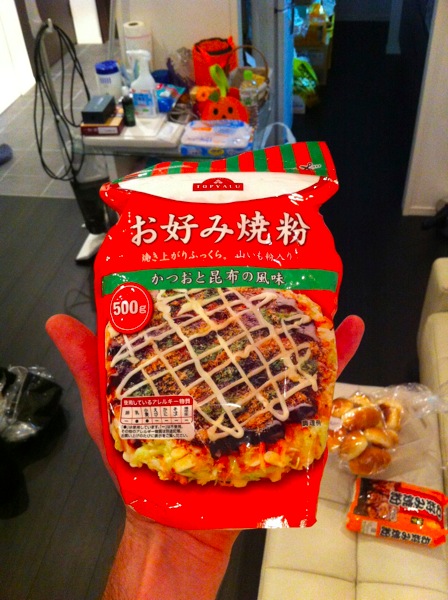
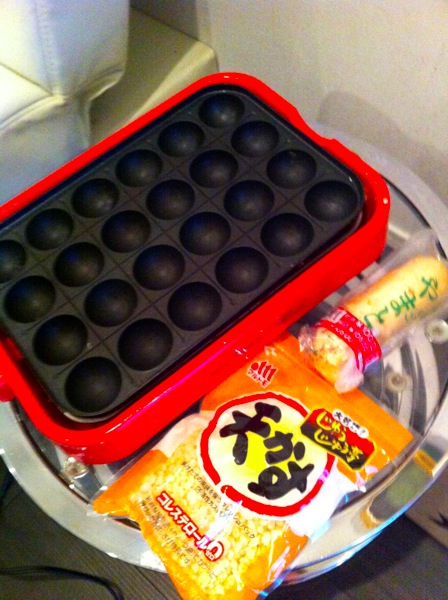
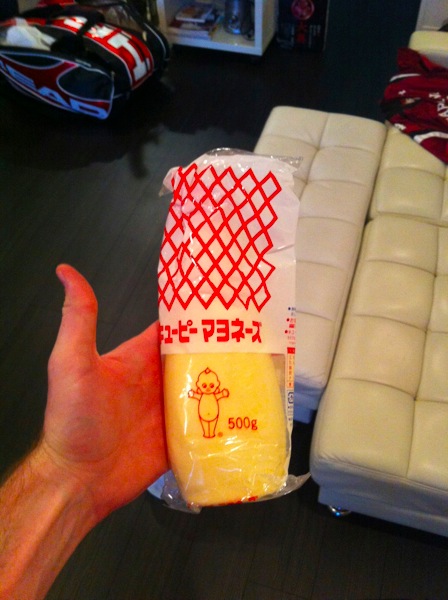
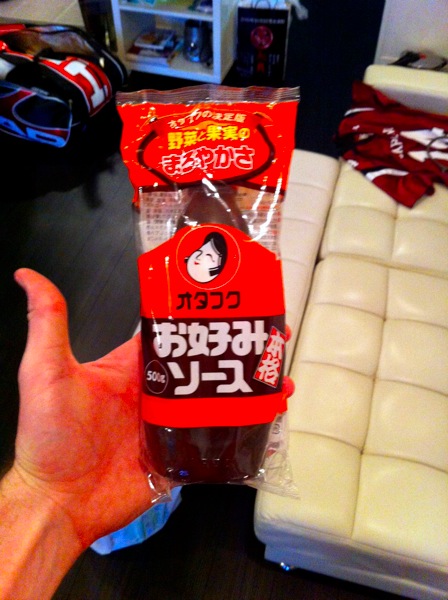
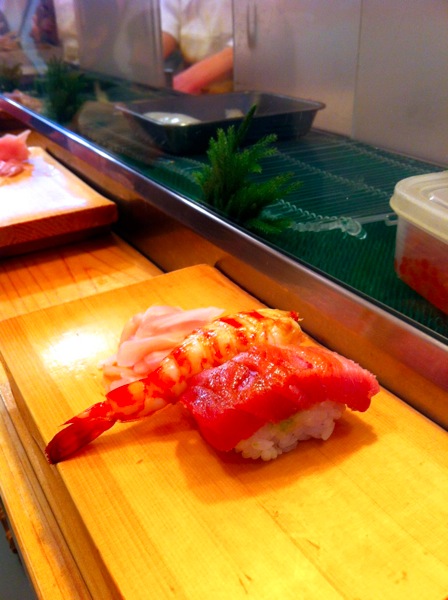
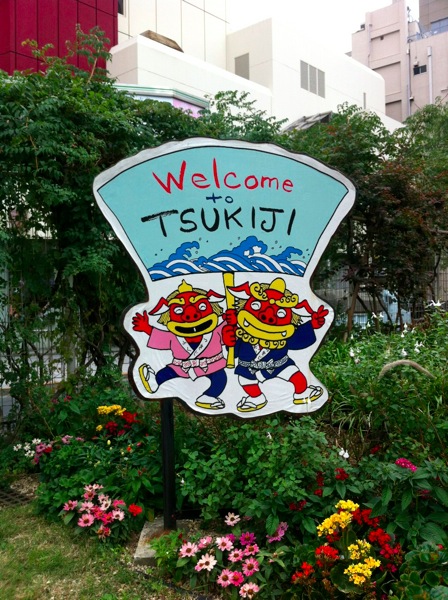
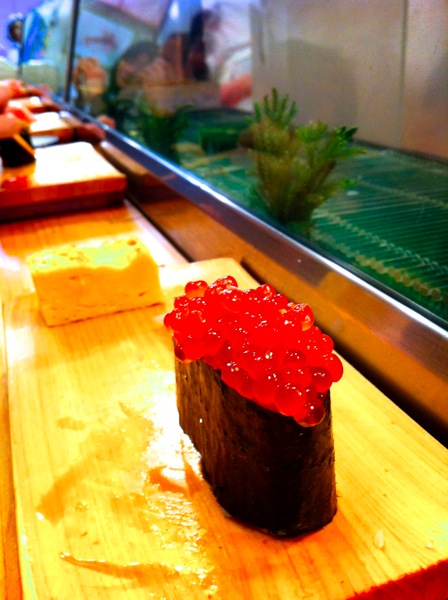
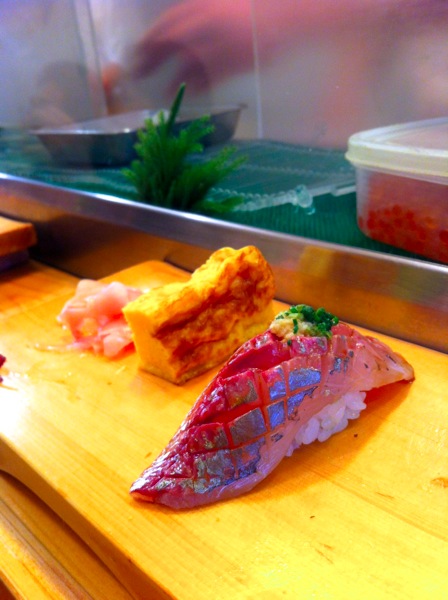
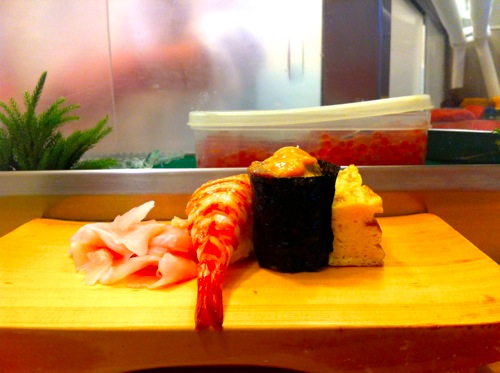
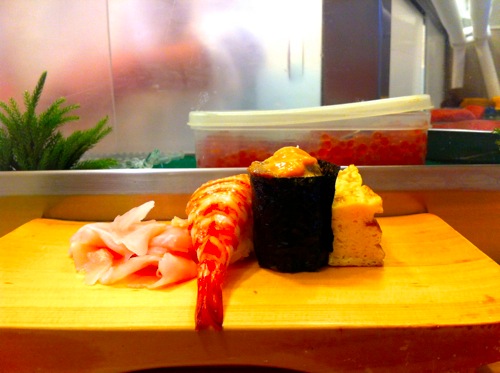
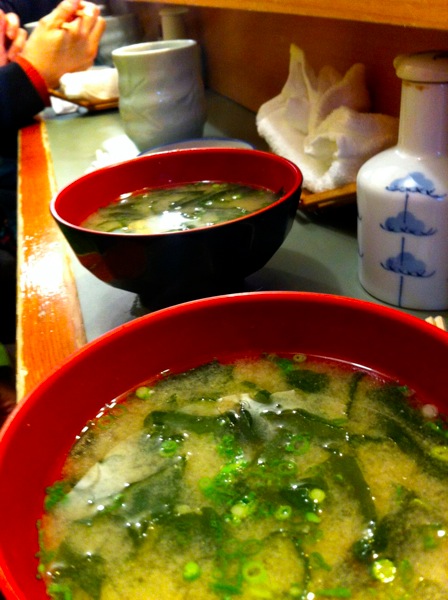
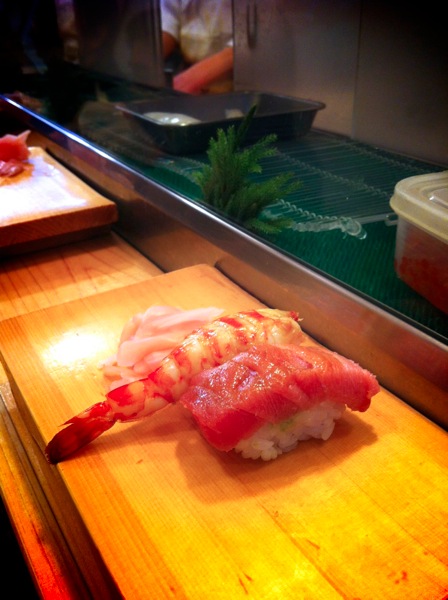
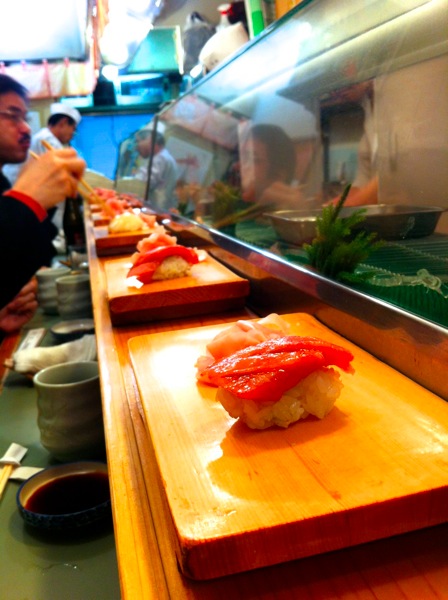
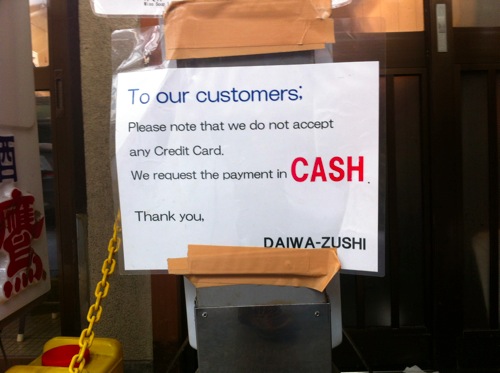
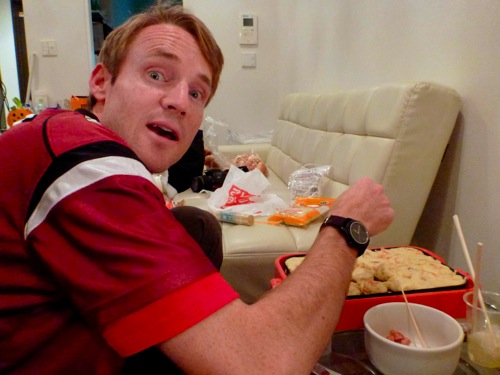
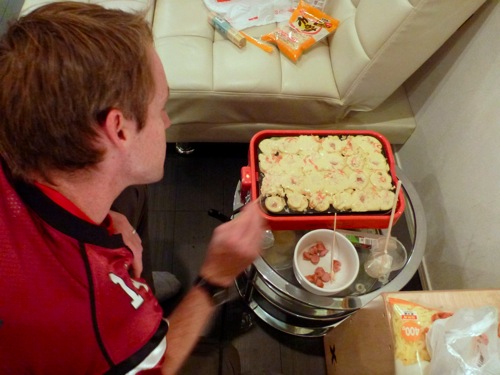
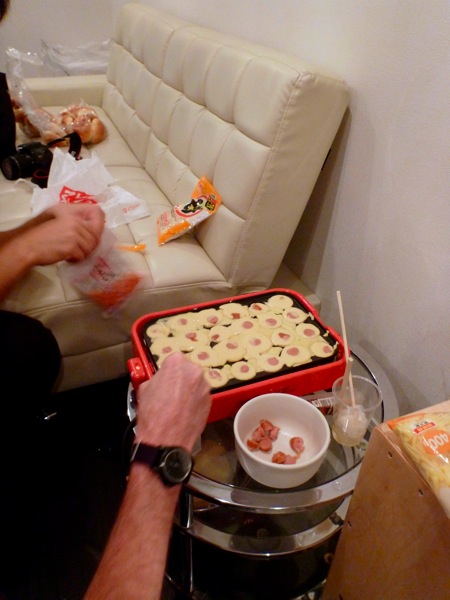
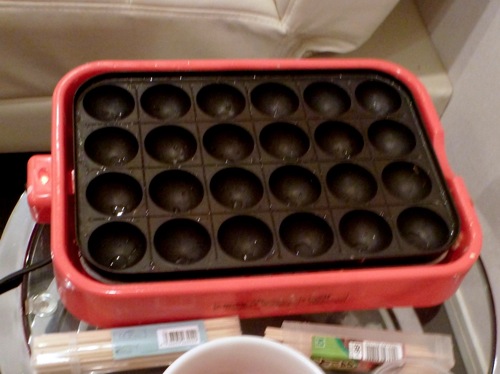
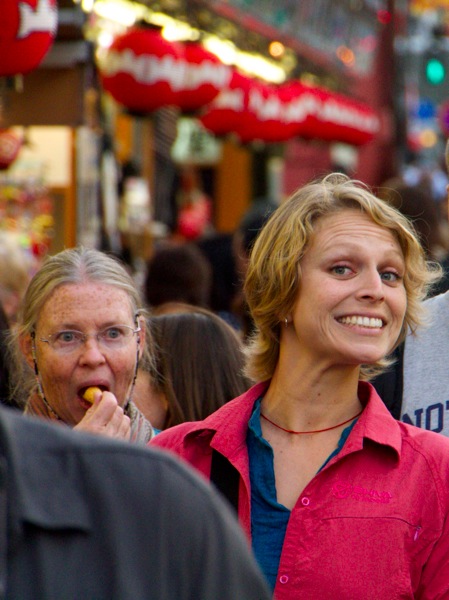
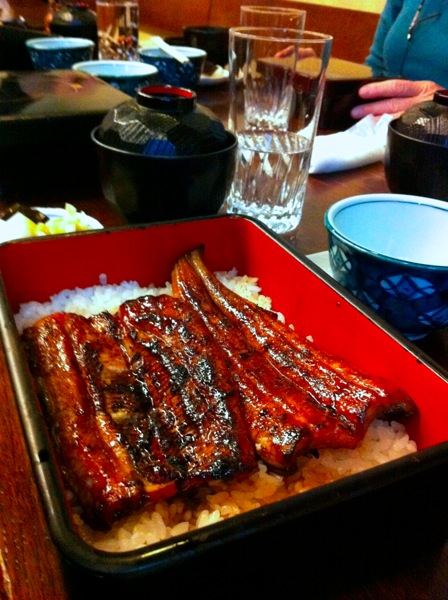
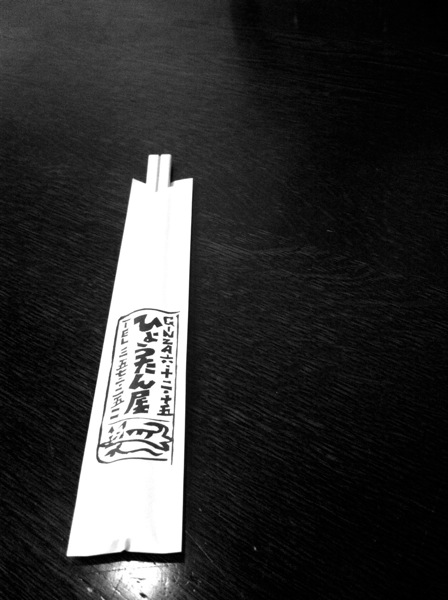
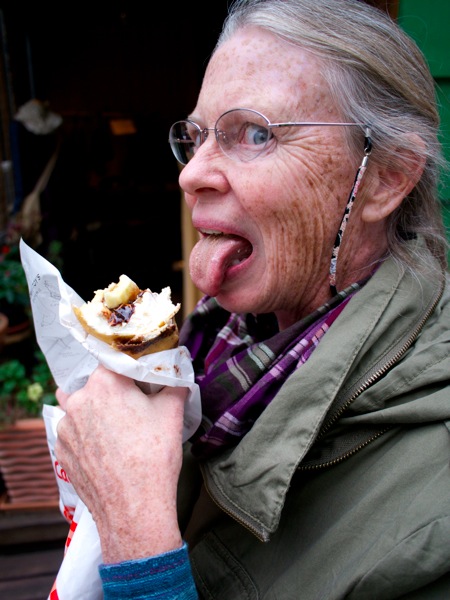
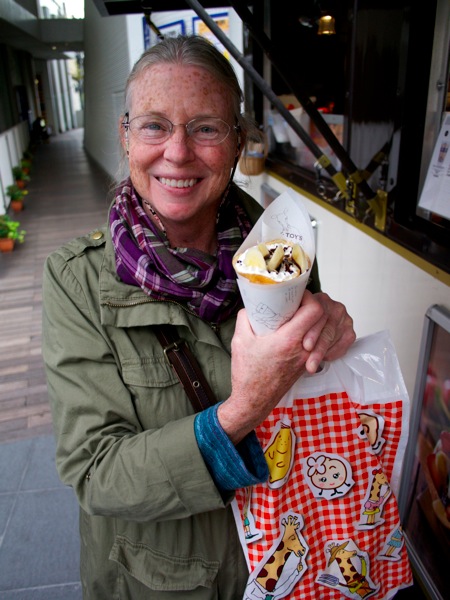
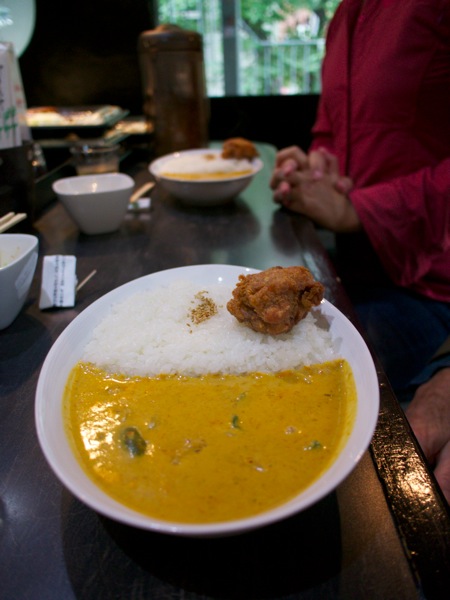
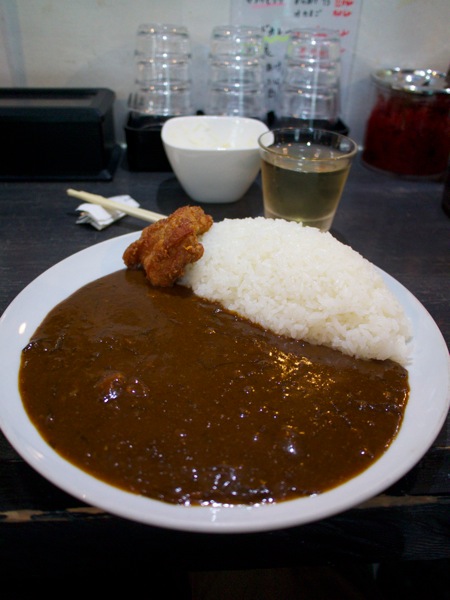
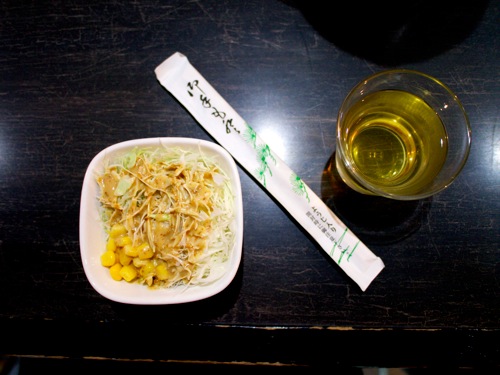
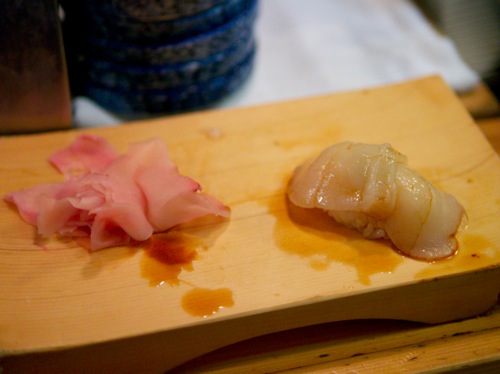
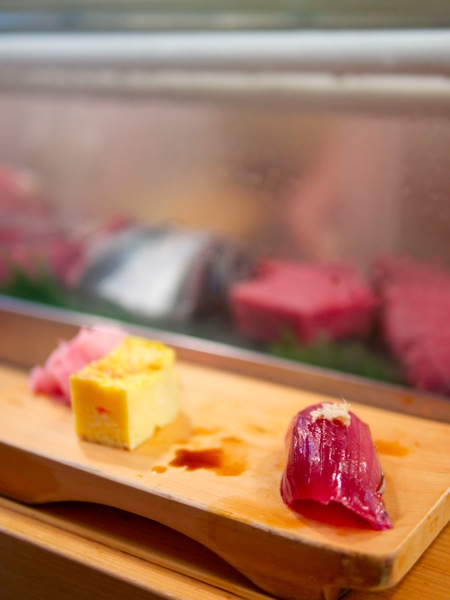
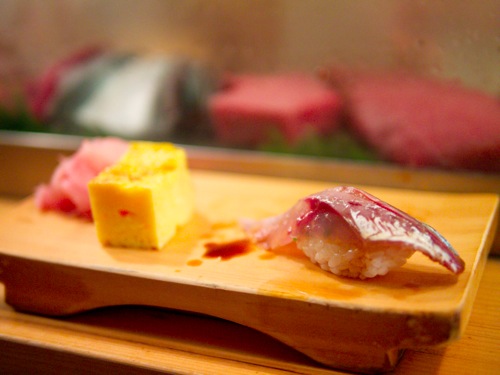
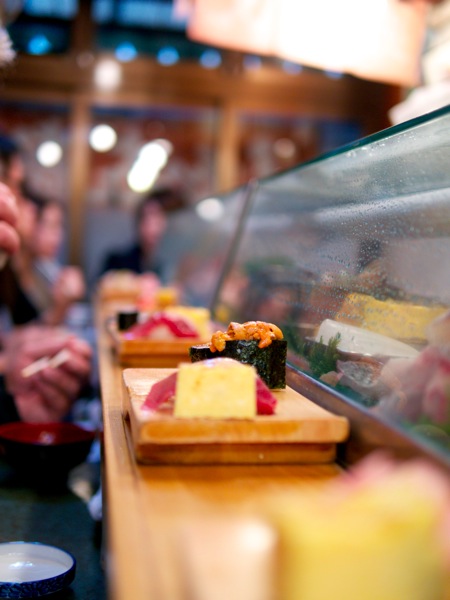
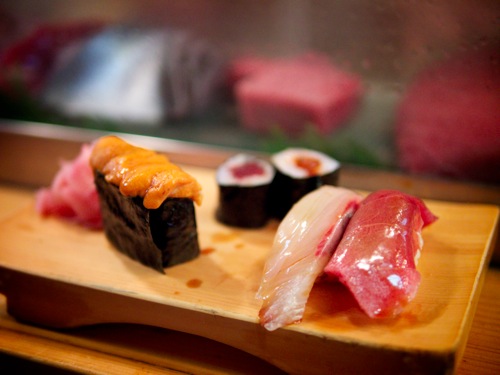
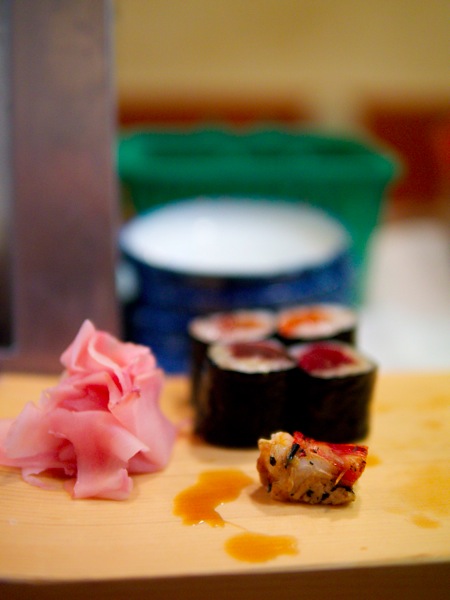
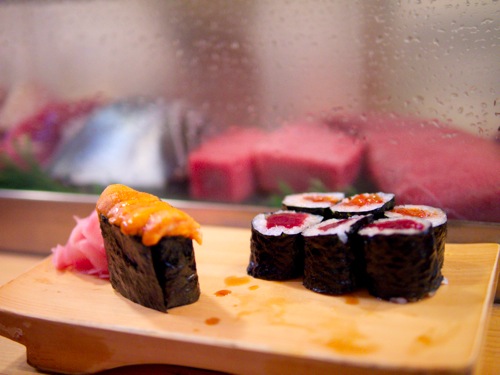
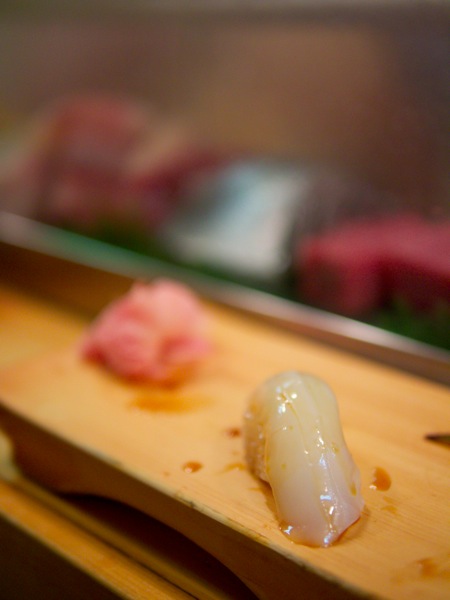
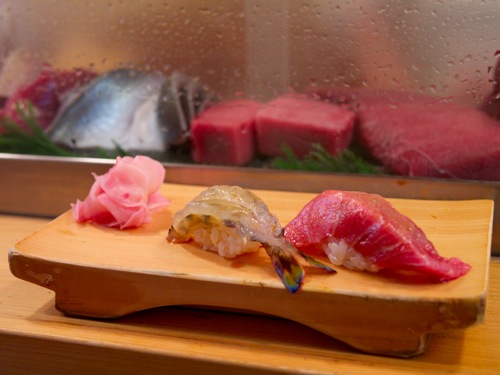
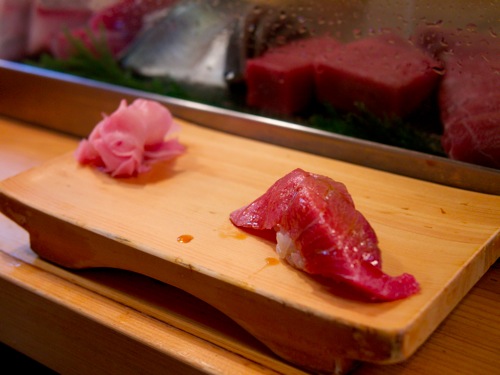
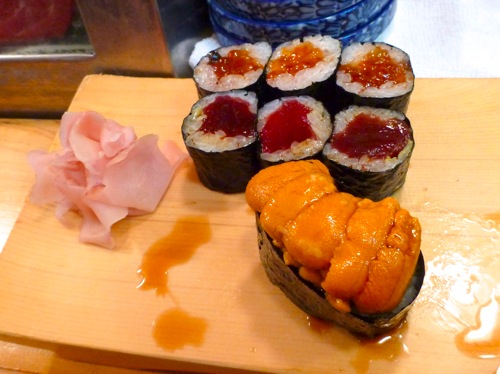
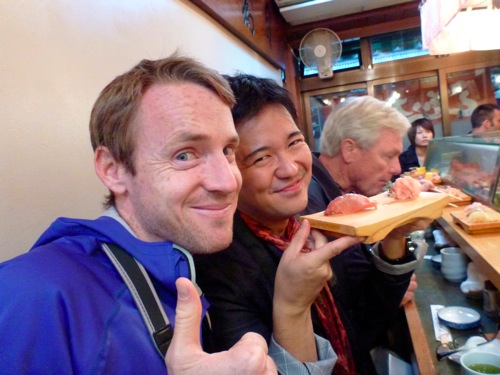
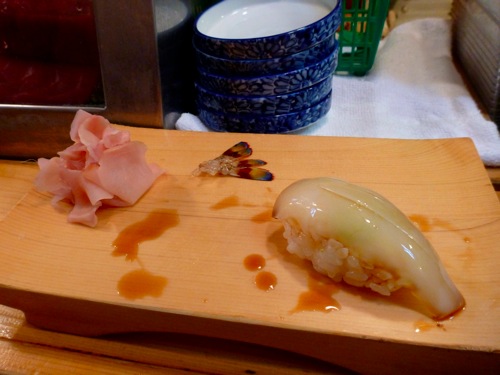
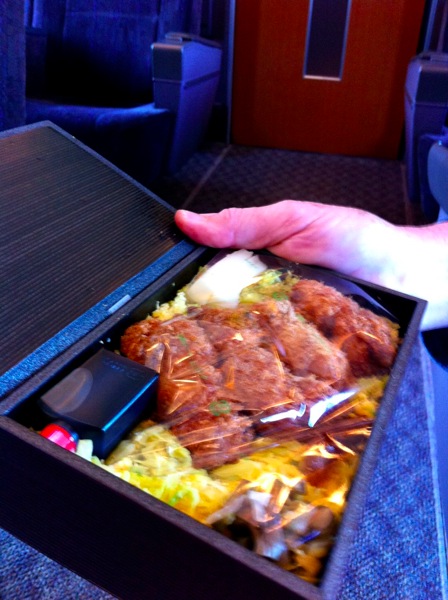
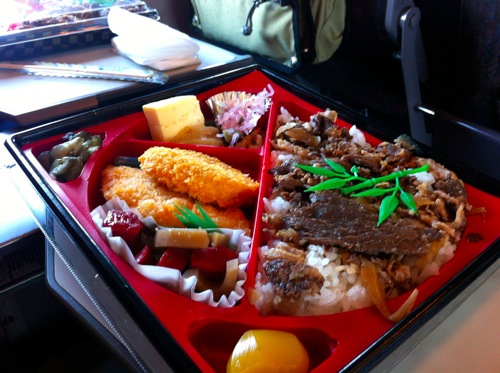
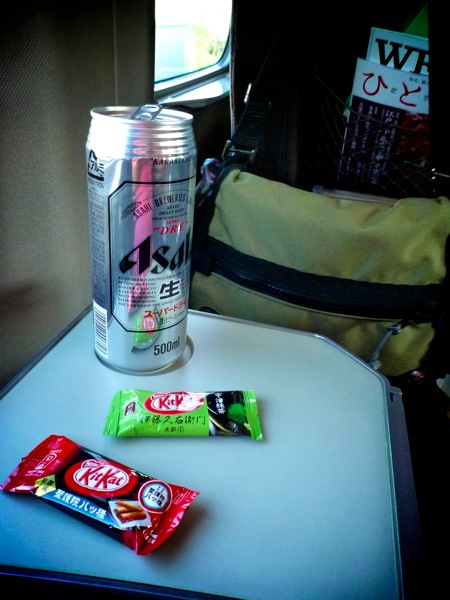
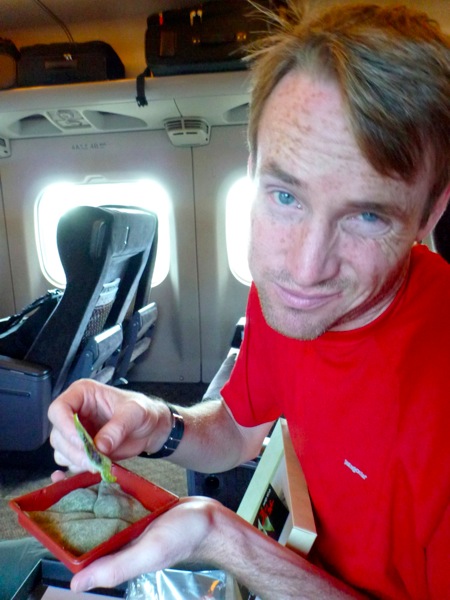

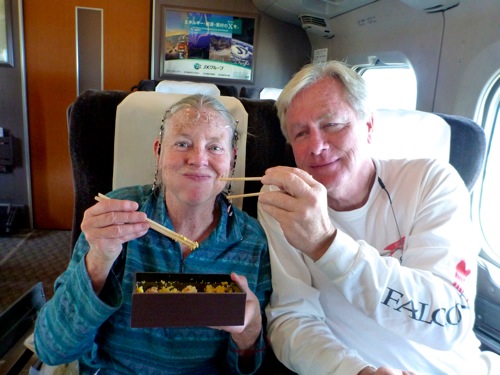
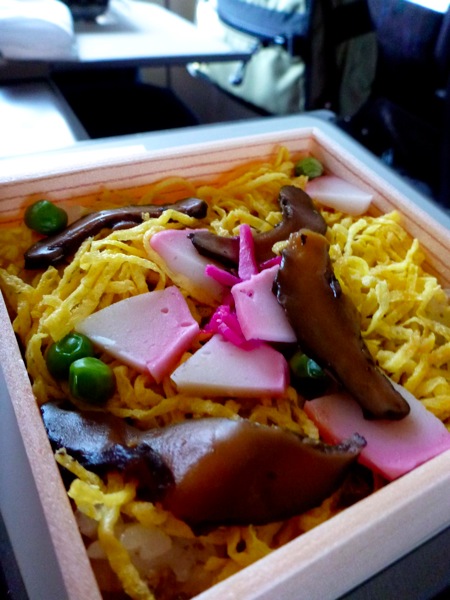
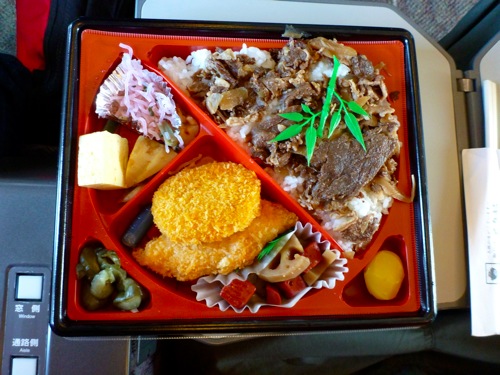
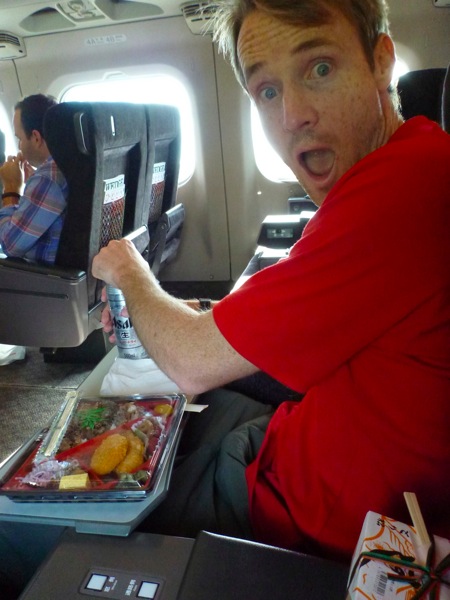


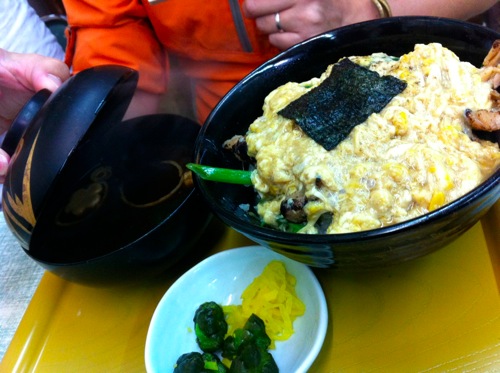
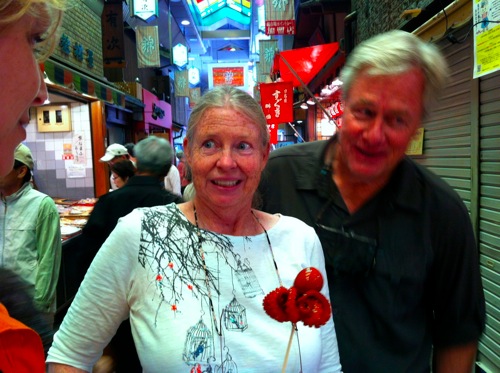
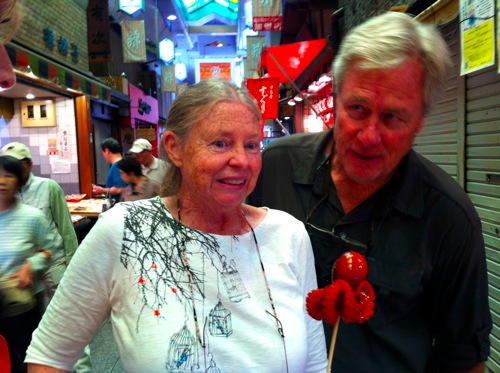
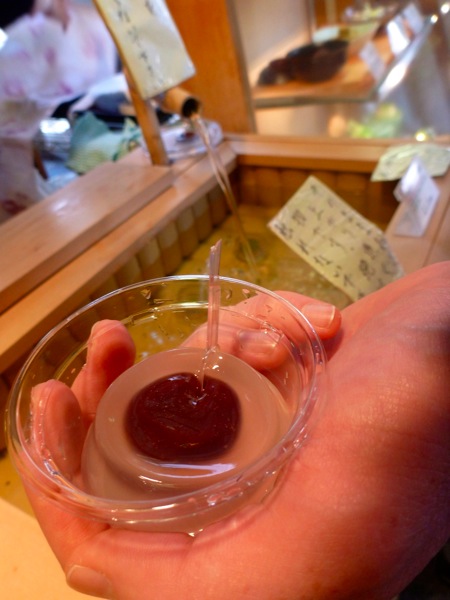
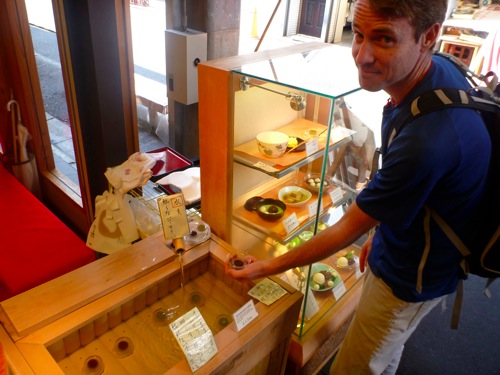
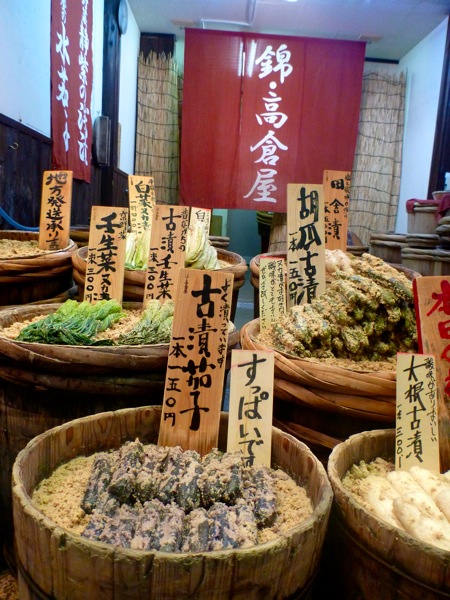
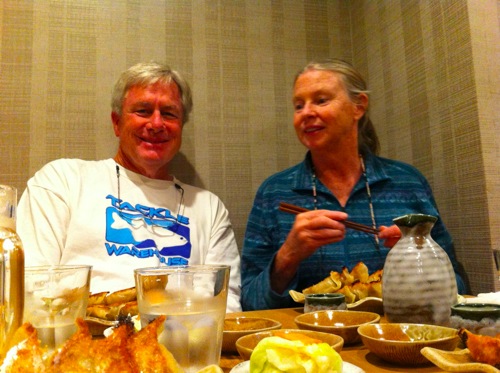

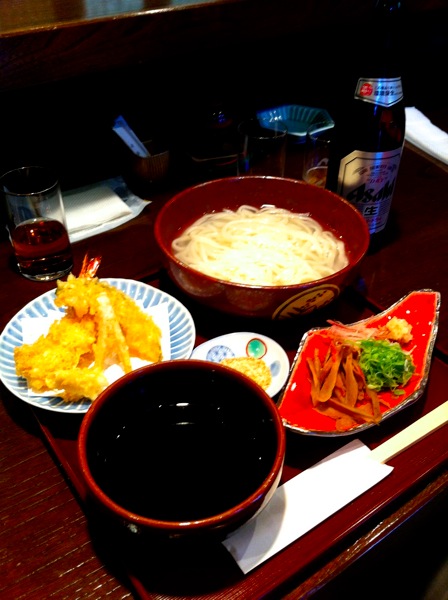
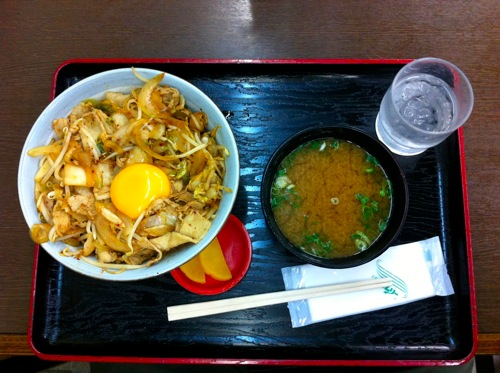
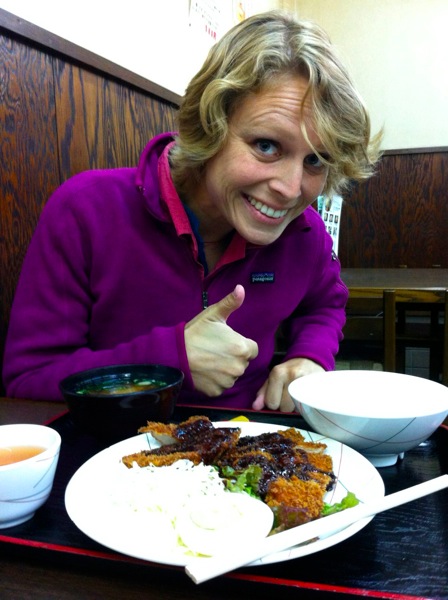
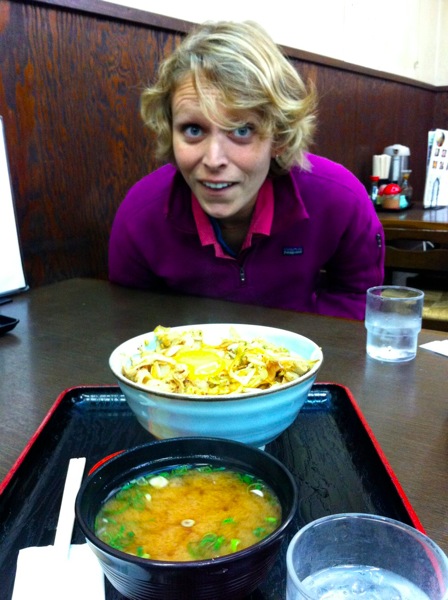
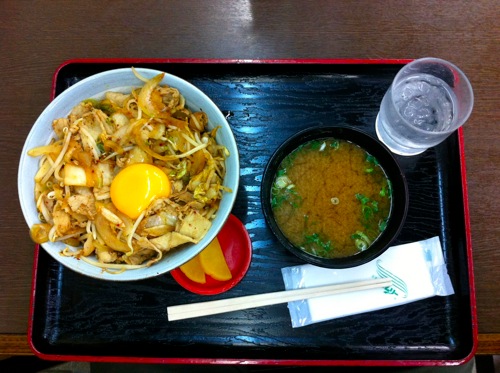
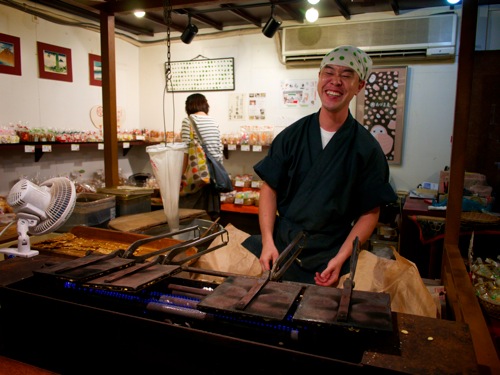
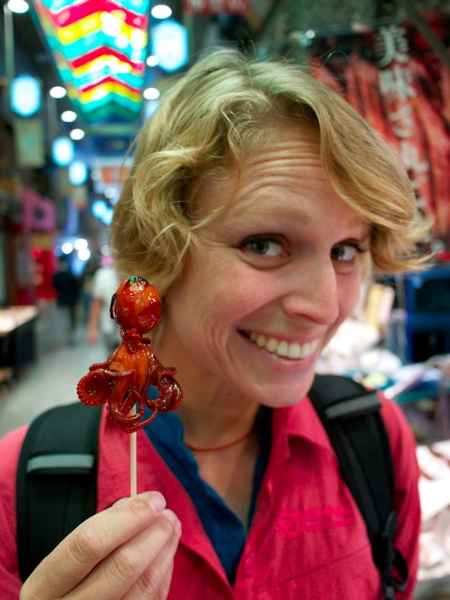
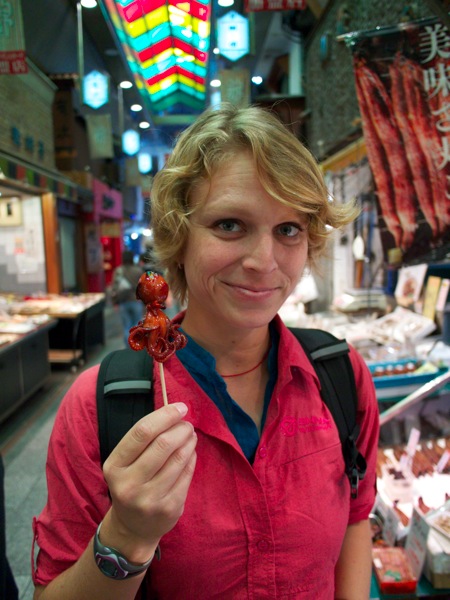
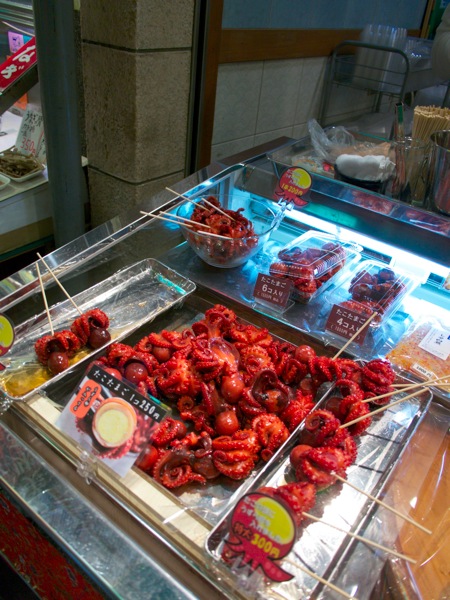

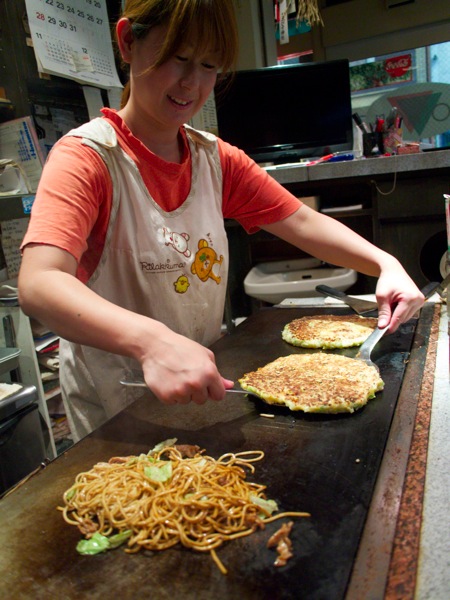
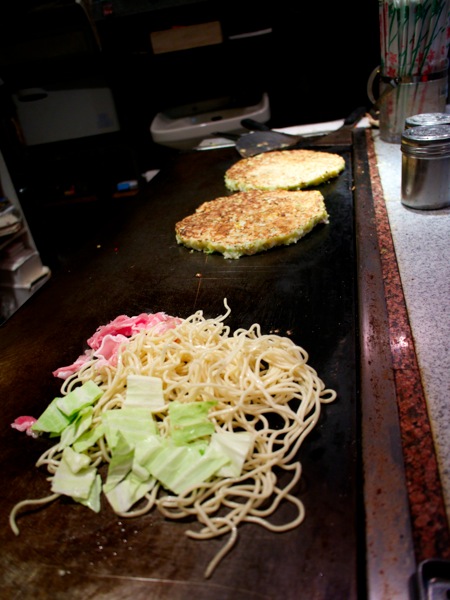
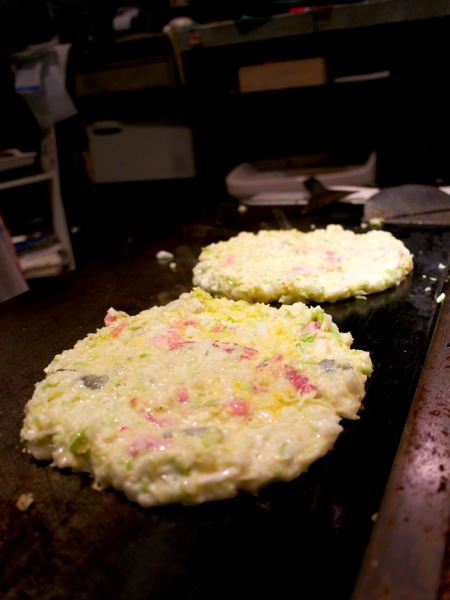
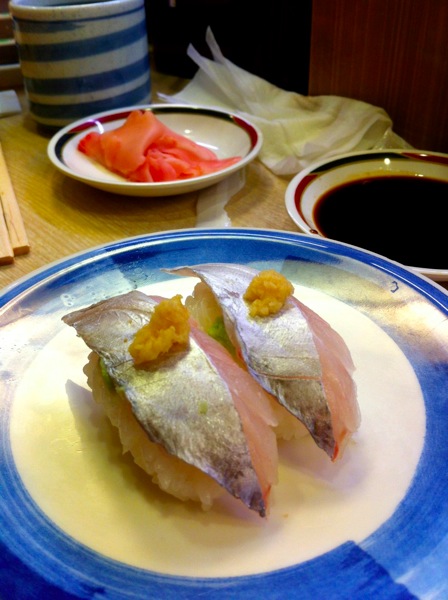
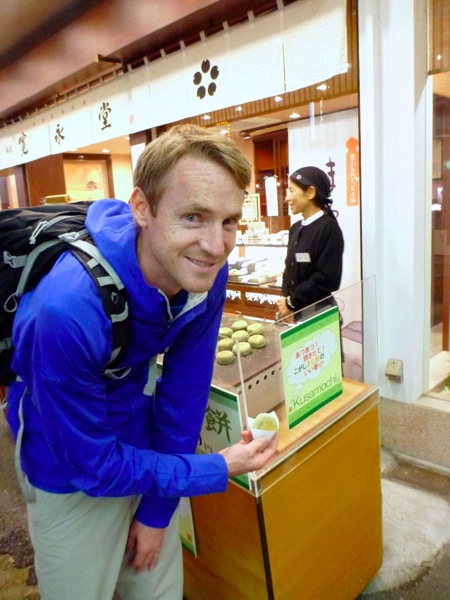
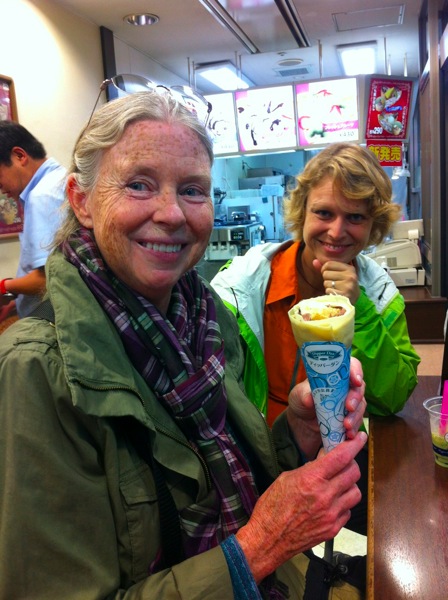
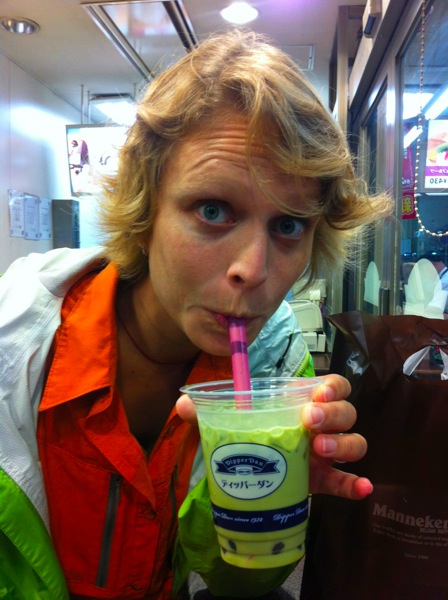
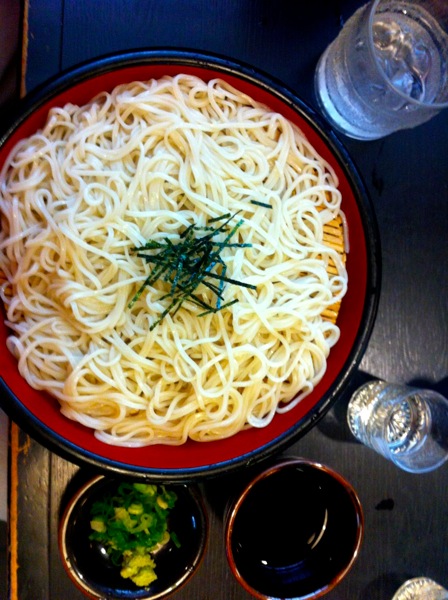
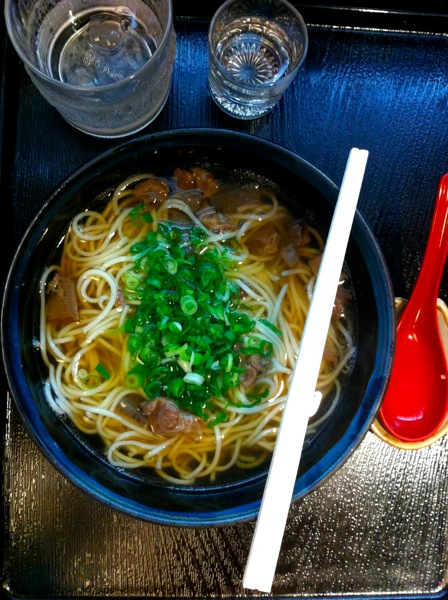
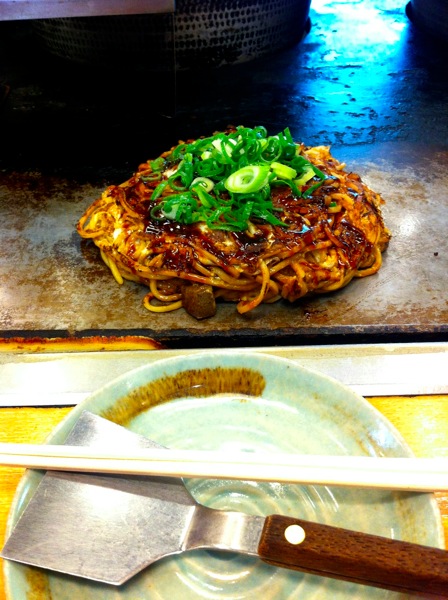
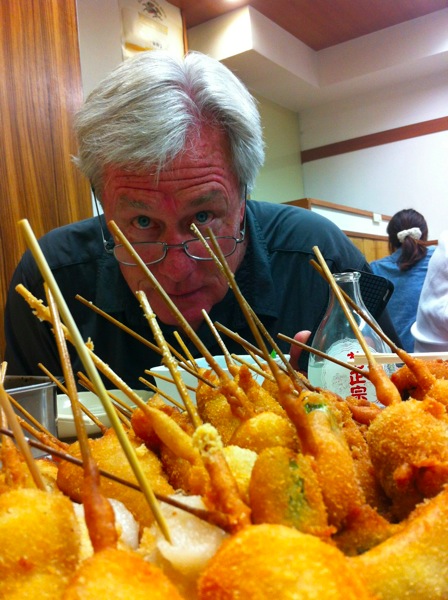
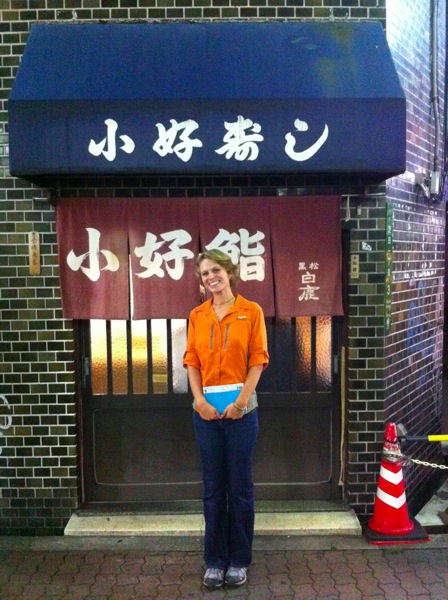
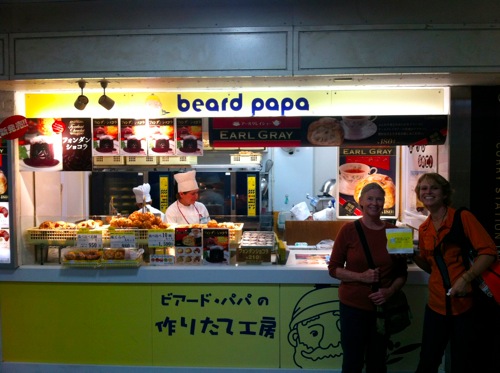
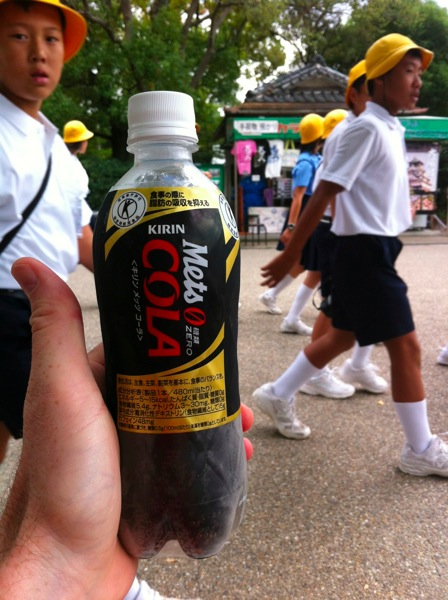
Krazy 'Bout Kyoto
We are really enjoying Japan, and Kyoto seems to be our favorite stop so far. It is near mountains, and it seems to be surrounded by a lot of green space. Though it is a city, it has more of a village like feel. Also,it is densely populated by temples and shrines and rife with Japanese culture. It feels less like a generic city and has more character than we've seen so far.

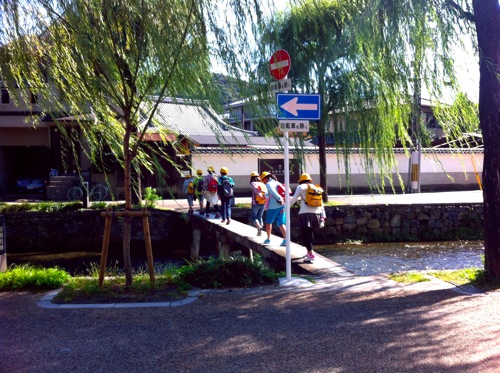
Our visit to Kyoto began with an exciting trip on the Shinkansen, more commonly known to Westerners as the Bullet Train. The train timing is impeccable in Japan. When the ticket says the train will arrive at 1:23, it will arrive punctually at that time. The organization of the train stations has been, almost, comforting. You know what to expect and it is unlikely you will become lost. The bullet train is quite luxurious. We have the reserved seat green car, with oversized chairs that recline and have a foot rest. They bring you a towel at the beginning of your journey and the windows are nice and clean so you can see the countryside. And, like the name suggests, we pass by the countryside at very high speeds. Seth found an app that calculates ground speed and we clocked a fairly constant speed of 150mph, topping out at 158mph. That's the fastest I've gone on land. It's pretty neat. And the train is so smooth, you barely notice you are moving. But, the train to Kyoto is quick and it was over shortly, only about 30 minutes including stops at other stations. Pretty impressive.
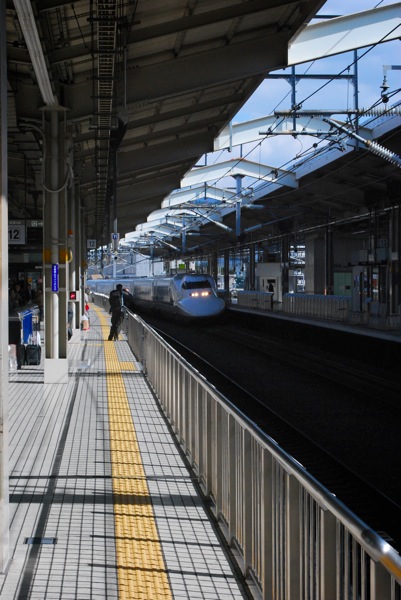
In Kyoto, Joan had found us a traditional Japanese style apartment to stay in. It was pretty easy to find the place, even though it was tucked in an alley with no street signs. The choked alley is packed with narrow two and three story homes with fairly short clearance, forcing us to mind our heads at every doorway. The alley sits along a peaceful little river and is lined with quaint little bridges and visited by ducks in the morning. Nearby is a local market where we found interesting shops and market stalls.
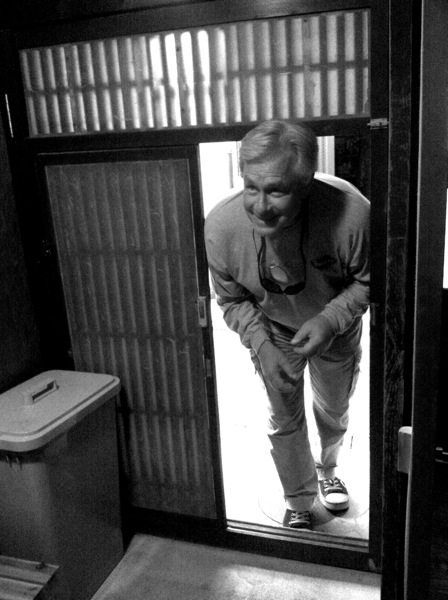
Heading into the downtown area of Kyoto it was interesting to find a mix of traditional Japanese architecture and stores alongside super modern buildings with brand names like Zara, Chanel, and the Gap on their storefronts. One of our first stops was to the knife store Aritsugu, to check out the most famous Japanese knives. Seth looked around, and was impressed, but decided to check the oldest known store in Japan first. We flowed streets that snaked in all directions in order to find Shigeharu, the little shop of the knife maker. The man spoke very little English, but was able to communicate enough for Seth to fall in love with two knives. At Shigeharu he bought a santoku knife and a deba knife. It was really neat to meet someone who had made the knives and came from a family who had been making knives for the past 500 years or so. Pretty impressive. After that we went back to Aritsugu to buy two more knives. There he bought a sashimi knife and a Japanese paring knife. For these you get to get whatever you want engraved on the knife in either Japanese Katakana characters or in English. Seth got 'Cobb' in Katakana characters on the knives and it's pretty cool.
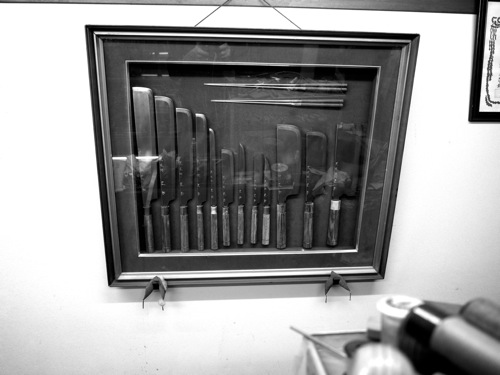
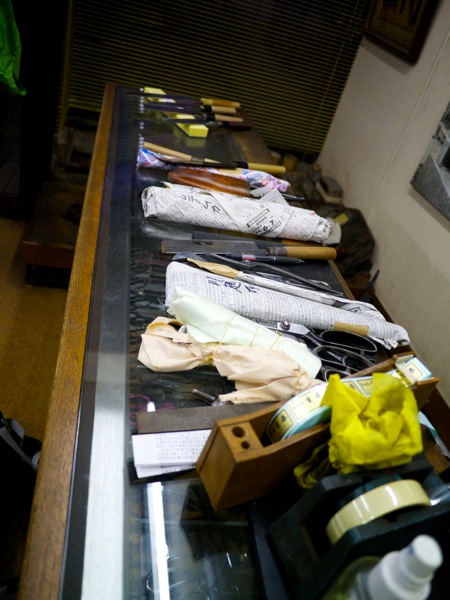
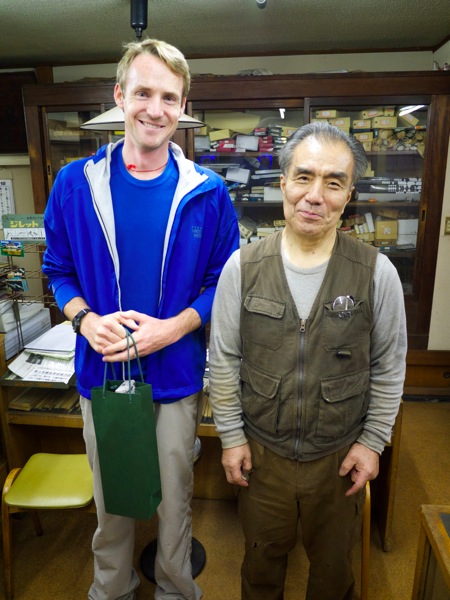
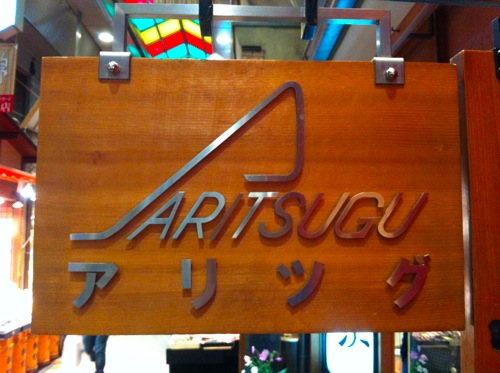
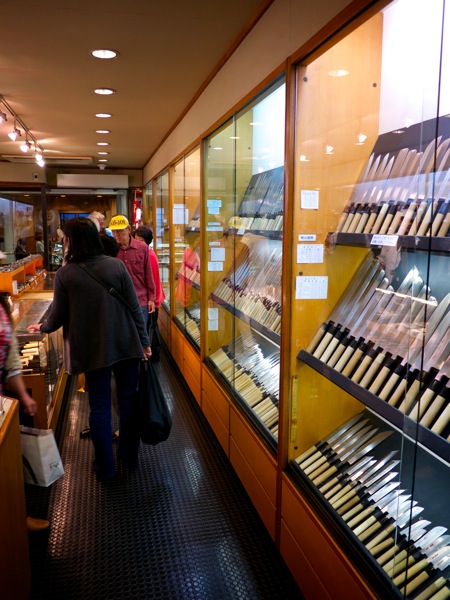
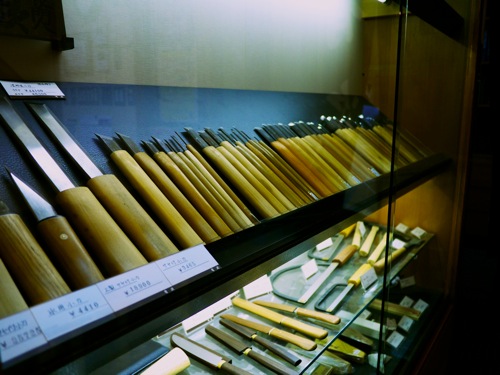
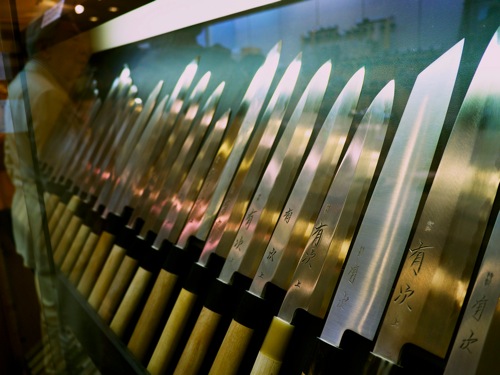
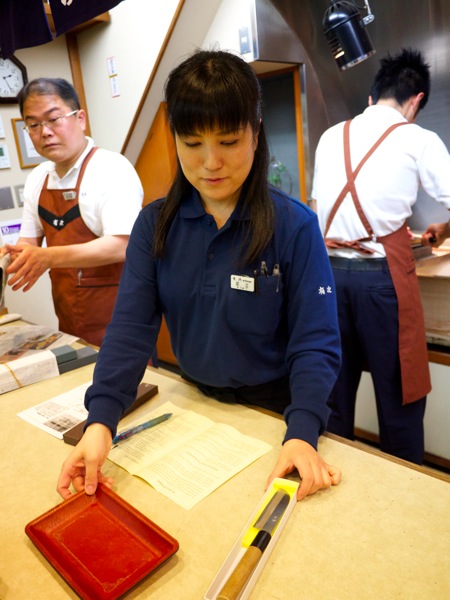
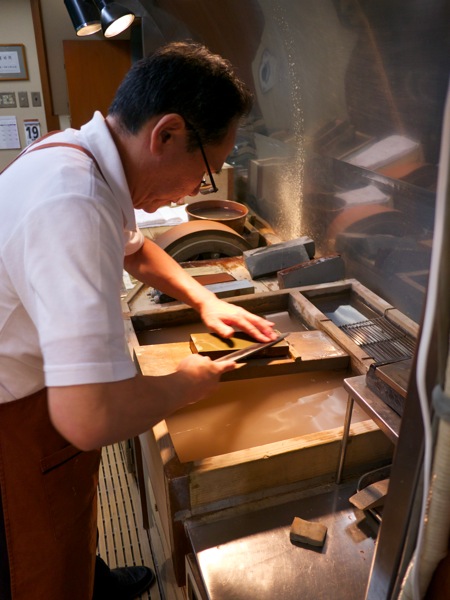
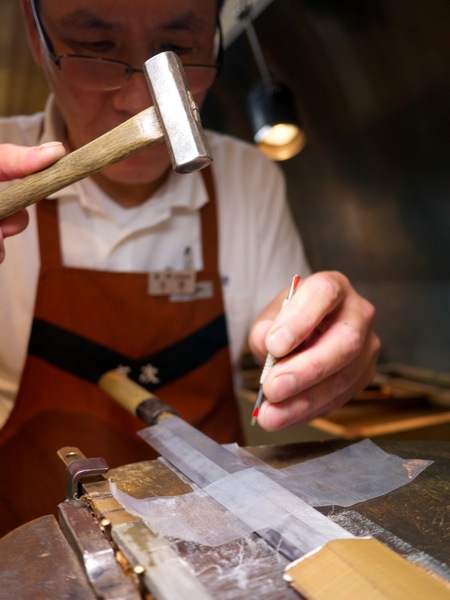
Afterwards, I was pretty excited because the plan was to have a sushi dinner. The woman who owns the apartment recommended Musashi for good quality sushi for an affordable price. We were surprised to see that the place was a conveyor belt sushi place. I thought this was an American phenomena, but I guess not. Each plate was 137 yen, which comes out to $1.72. We ate sushi to our hearts content, or at least till our bellies were full, drinking our complimentary green tea, and it only set us back about 25 bucks. This is really good for sushi, in the US or Japan, and it really was good quality. Nice...
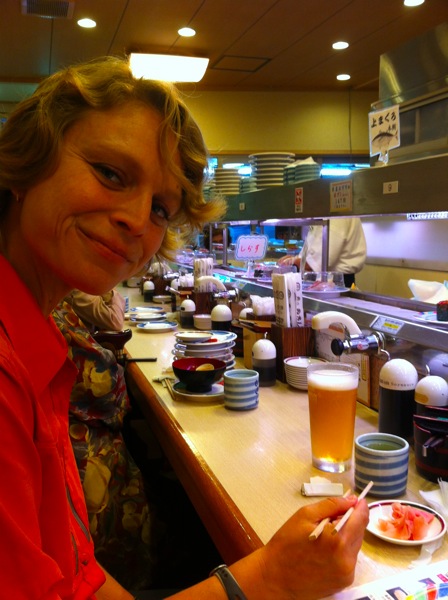
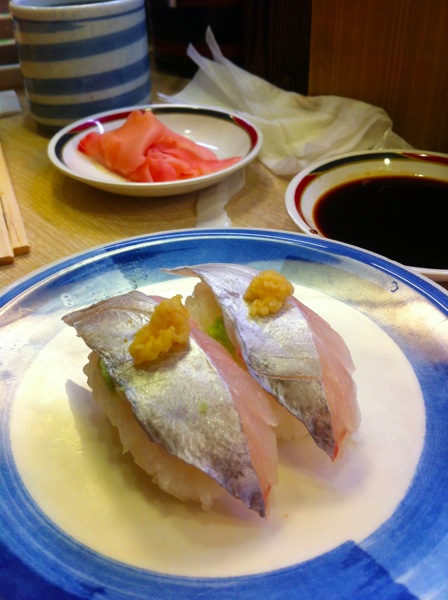
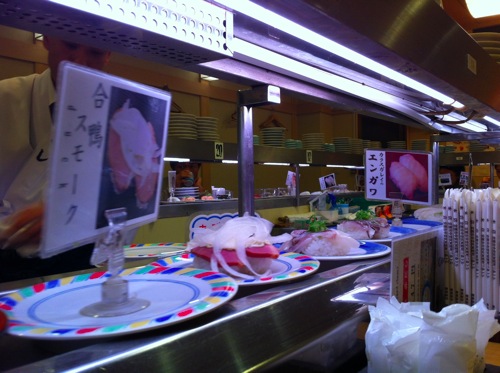
Walking around Kyoto we came across shrines in what seemed to be unusual places. In the big shopping arcades we would turn a corner and there would be a huge shrine. Once again, mixing of old and new. At one corner of the giant shopping area, just behind the Aritsugu shop was the Nishi marketplace, where you could find anything from quail egg stuffed baby octopus on a stick, to seasonal dried black edamame, to exquisitely delicate, hand made and painted pottery. It was a very delicious place to walk around. Many vendors would gesture politely to you in order to offer you a taste of their delicacies. Everything is so good. We snacked and bought more for later.
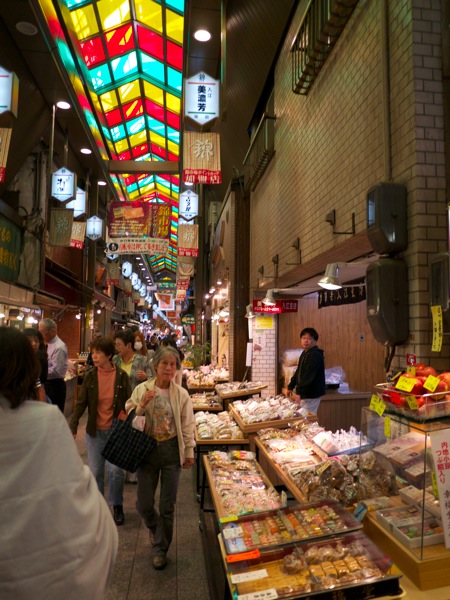
The next day we mostly walked around aimlessly shopping and trying to relax a little. Though Japan has been a lot of fun, it's been really fast paced and we've been walking a lot, so it's been tiring. We, also, didn't want to do too much sight seeing of temples and shrines before Joan and Steve joined us.
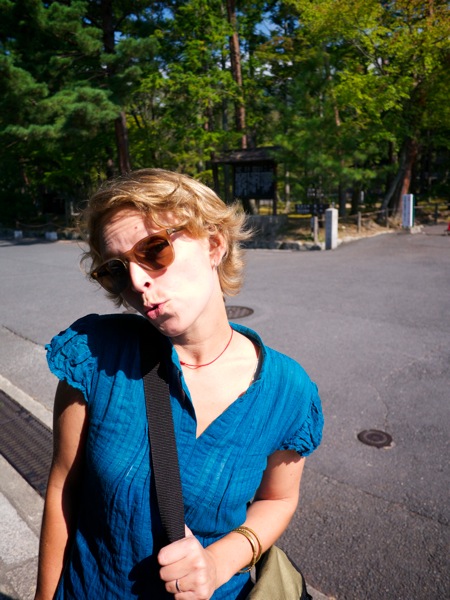
The next day was pretty packed with transit for Seth and I. We made our way to the train station fairly early in order to catch a train to Kobe to pick up Joan and Steve. When we arrived at their hotel we found the gathering area for a walk a thon and spent a little bit of time watching some performers. Eventually Joan and Steve made it back to the hotel and we found our way back to the train station to Kyoto. Steve was feeling much better, which he was happy to show us back at Musashi. He made a nice pile of plates to match the amount of sushi that Seth and I devoured. We were hoping he was feeling good enough to enjoy that place, and luckily he did. Joan was able to enjoy tempura and some veggie rolls.
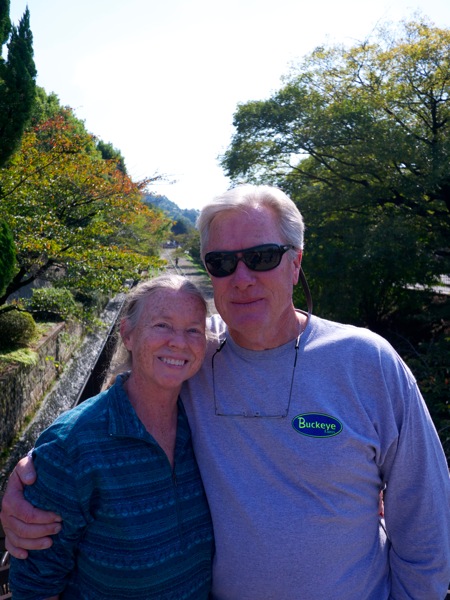
The following day's adventures included a ton of temples. We visited the Nanzen-Ji temple complex. The massive wood temples were quite a sight to see. I really enjoyed the Japanese garden.
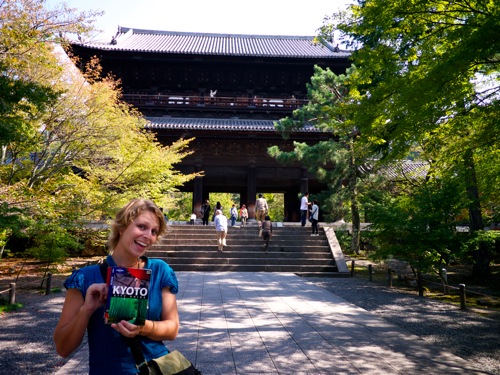
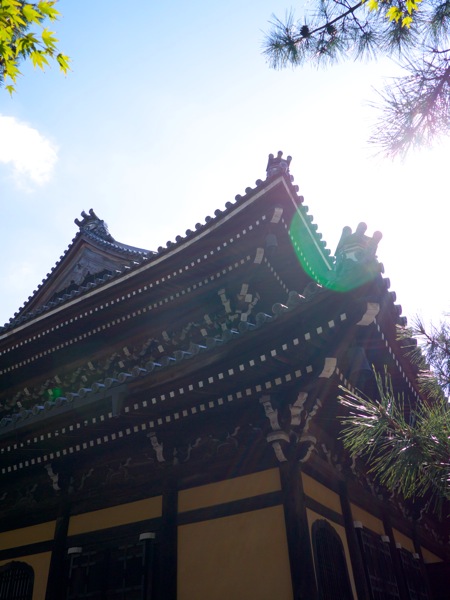
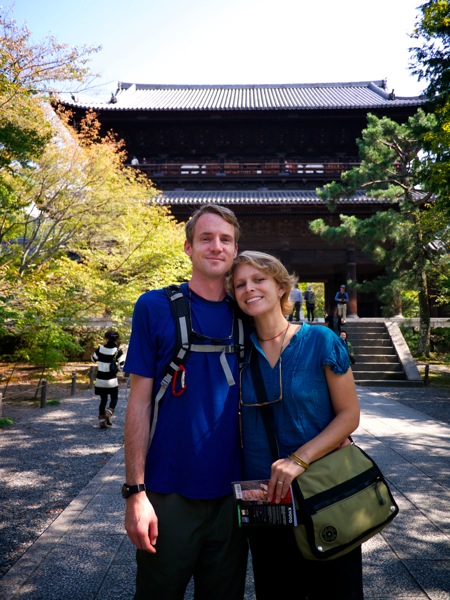
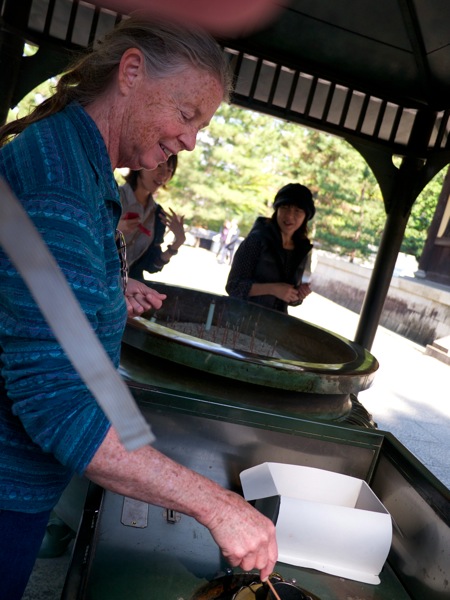
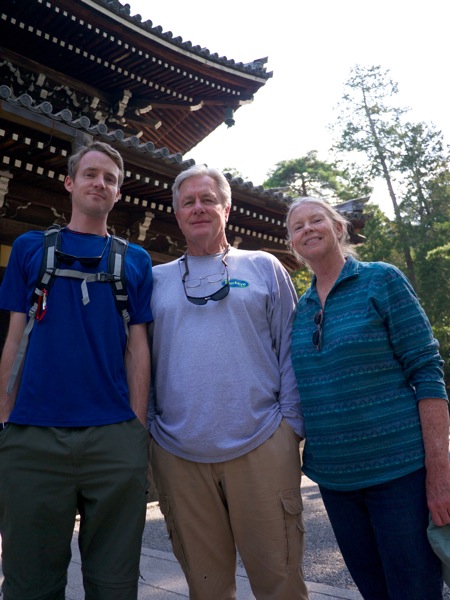
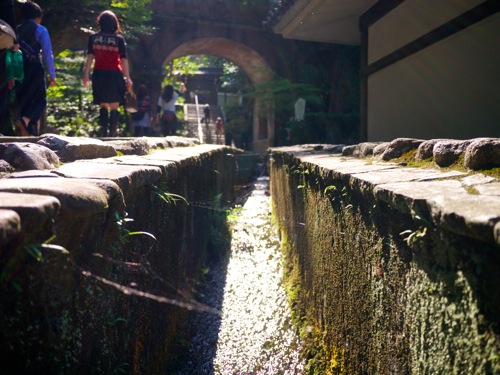
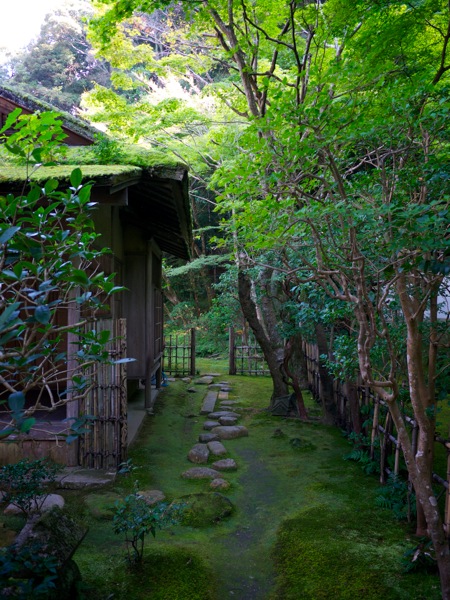
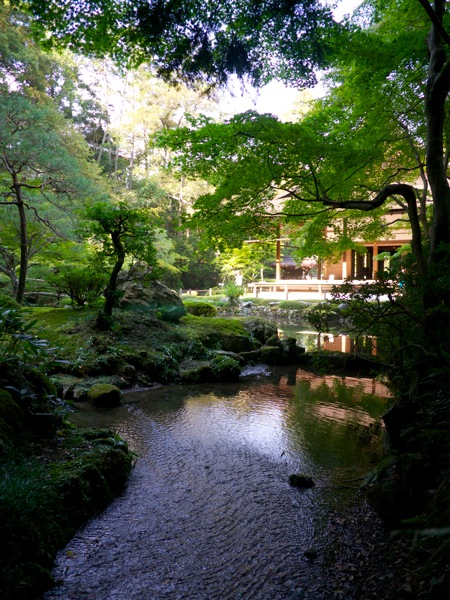
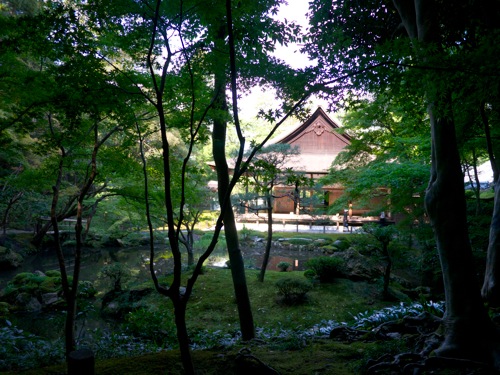
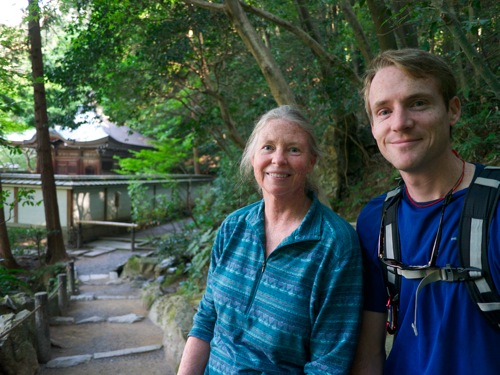
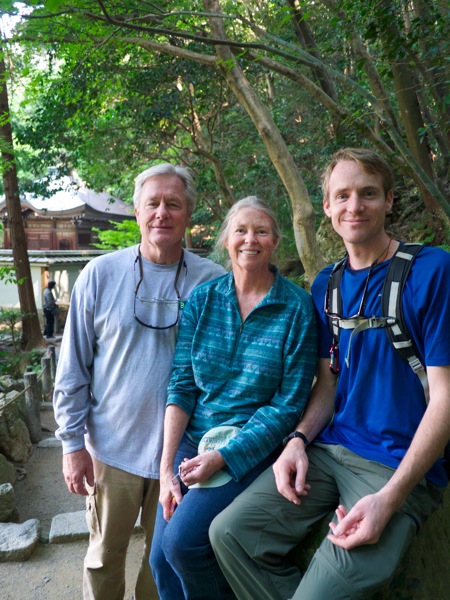
Our lunch that day was my favorite meal in Kyoto. We found a soba place that made their own noodles. Seth and I both asked for omakase shimas which is asking for the server to choose for you. He pointed to a soba plate with tempura and Seth ordered his hot, while I ordered mine cold. I don't think I've ever eaten cold soba, so this was something new for me. When we got our plates I had to ask what exactly to do, because the noodles were submerged in a bowl of iced water. I knew that I wasn't to eat the noodles directly from the ice water, and that I shouldn't pour the sauce into the water, and there were little veggies and toppings on my tray as well. So, I found out that what you do is you slide all the toppings you desire into the sauce (I put all of my green onions, shallots, ginger, and bamboo shoots in, and a little bit of sesame seeds) and then you dunk your noodles into the sauce before eating them. The noodles had the perfect consistency of being soft and firm at the same time. The sauce was salty and the bamboo shoots and onions complimented the noodles well. And the tempura was the best tempura I'd ever had as well. The veggies and shrimp inside were perfectly cooked, and the tempura was crunchy, savory, and light, not greasy like in the US. For me, it was a perfect meal.
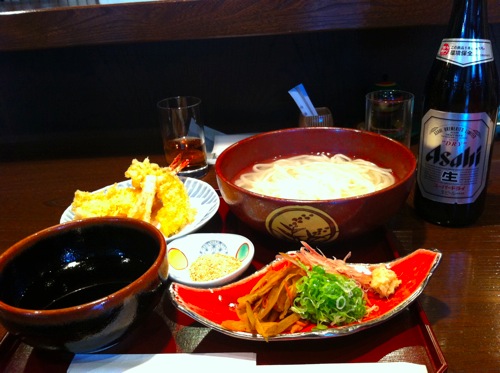
Nearby was the giant temple Honen-Ji. There was a major courtyard and large temples surrounding it. The entrance led to a large street framed with colossal orange 'arcs' which look like the mathematical symbol for pi. They were setting up for the next day when the Jidari Festival parade would finish there. The next day we were able to watch the festival. The Jidari Festival is a parade that depicts traditional ware and costumes throughout the Edo period. We saw some interesting costumes and some interesting looking horses with really long, skinny legs. There were, also, geisha in the parade. That was a highlight for me. There are only about 1000 geisha left in Japan, and about 800 of them live in Kyoto. So, seeing geisha in Kyoto is just something you do. That evening we went to a street where there are many traditional geisha tea houses so we could see some geisha making their way to appointments. Seth, Joan, and I felt kind of stalker-ish standing outside homes, alongside a group of men with fancy cameras, waiting to get a shot of a geisha. When it came down to it, I felt awkward and embarrassed to take pictures. The coolest sighting occurred when we were leaving. There were two really fancy looking geisha in the back of a black limousine like taxi. They were beautifully done up with the white makeup and hair adornments.
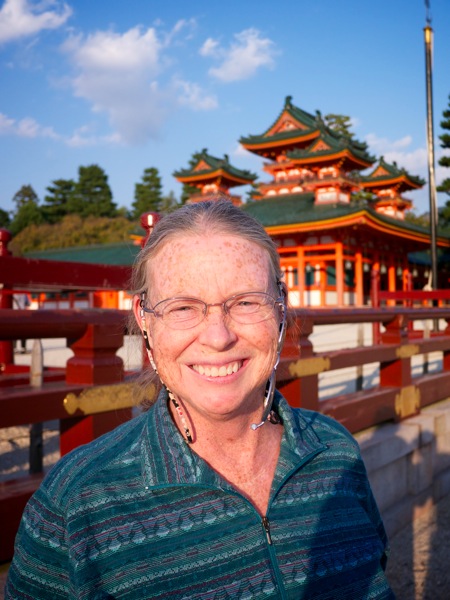

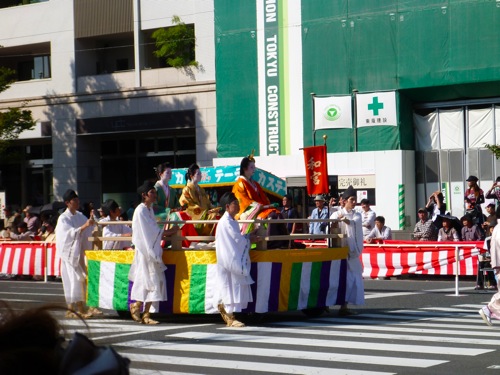
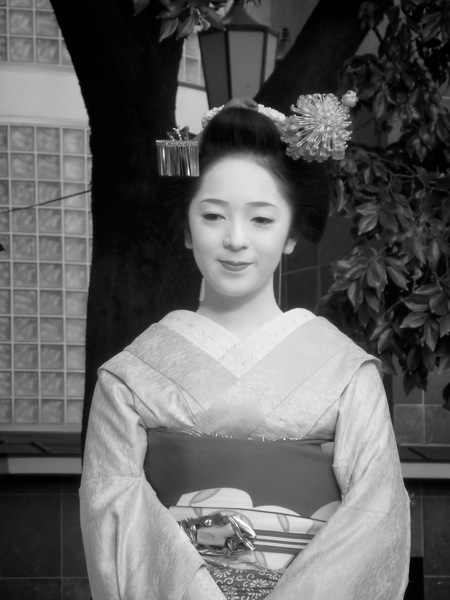
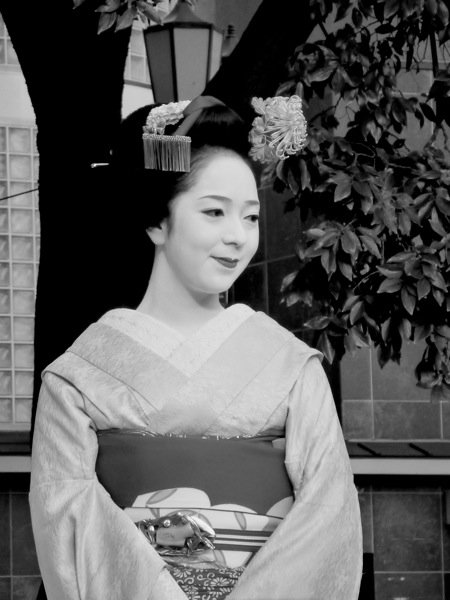
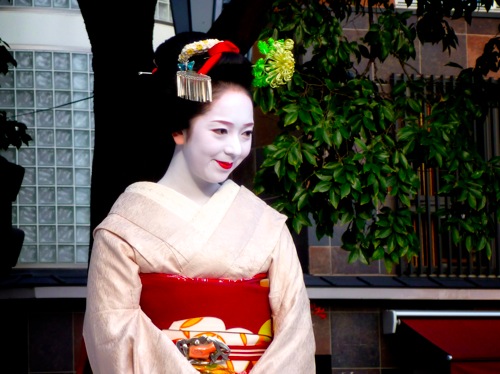
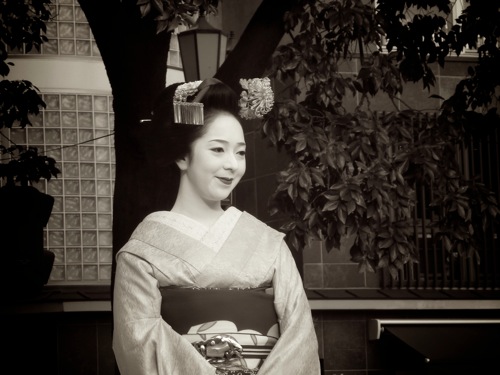
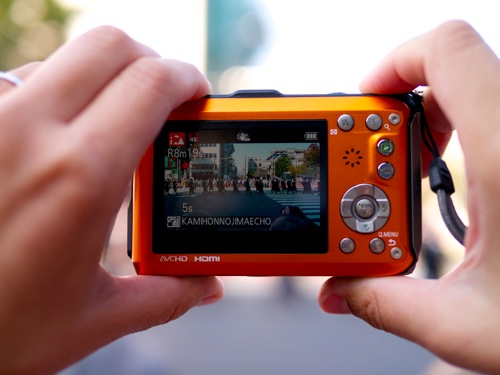
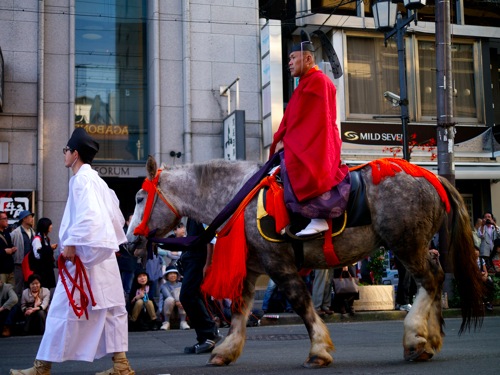
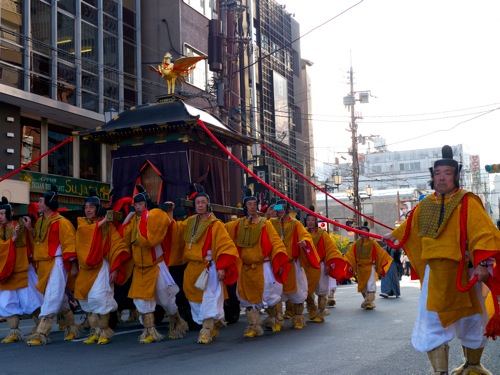
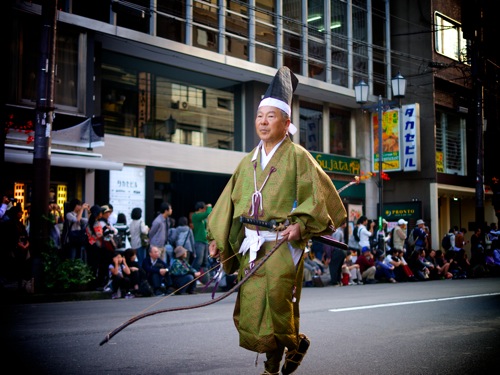
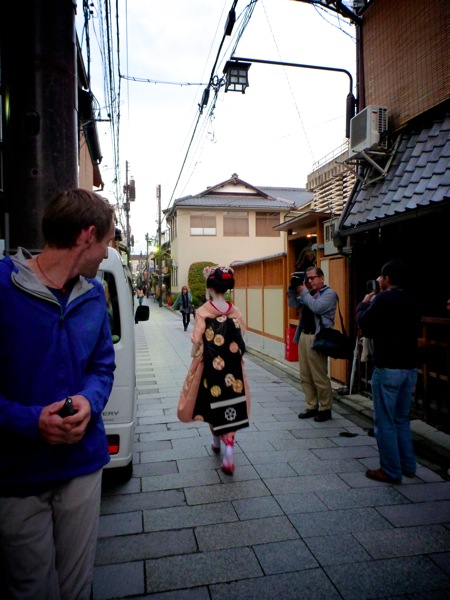
The next day was cold, cloudy, and rainy. But, that was ok, because we had to run some boring errands anyhow. But, nothing is truly boring when you are traveling, because even the most mundane task is different than how you do it at home. For example, we were told that the best place to buy an extra suitcase for Joan and Steve to bring back all of our collected souvenirs and all the ones they had purchased in Japan, was at a specific mall. While searching for a suitcase we saw all different sorts of stores that were unique from those you typically find in the US. After we found Joan a big blue suitcase, we went back to Nishi market to have some snacks and so Steve could buy some knives. The rest of the evening was spent organizing, packing, and returning to a restaurant around the corner to pick up some of the best gyoza we've ever had. It was difficult to leave Kyoto, but we were excited to head to Tokyo, and on the way we would hopefully see Mount Fuji from the Shinkansen.

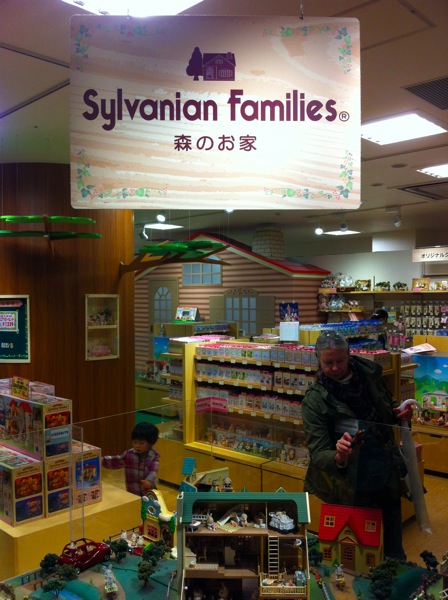
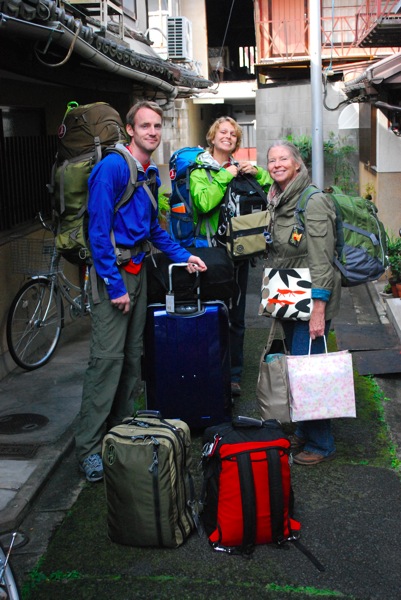
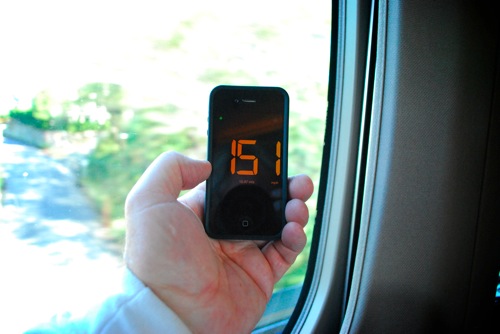
Kathmandu Part Deux
We're back in Kathmandu, and though it was difficult to leave the countryside, it's nice to have the comforts of home and to be in one place for an extended amount of time. Once again, we are staying at the Hotel Courtyard and it's just so comfortable here. We've been borrowing DVDs and spending long lazy days recuperating. Seth's knee is hurting a bunch so we're trying not to walk too much. Luckily we don't have to do too much walking because Thamel is so convenient. We've been buying souvenirs and frequenting our favorite restaurants, like New Orleans, Fire and Ice, and Green Organic Cafe. Like I said, we've been enjoying having a 'home' for the past week.


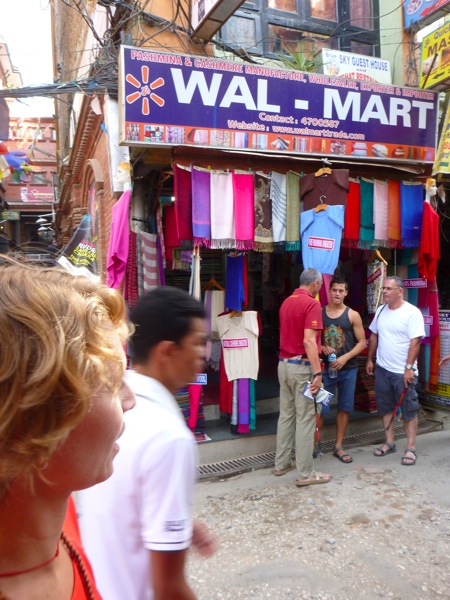
One evening we had dinner at the hotel. We noticed that the group of people we were hanging out with seemed to be pretty close. Eventually it came out that these people were expedition groups that had just gotten back from Manaslu (the mountain that seems to be the precursor to climbing Everest). But, they happened to be on the mountain at the base came when the recent avalanche hit at 4am one morning. That happened just before we left on our trek. Some of them had continued on, but for some the tragedy had been too much and they decided to come back to Kathmandu. Either way they all had some pretty intensely horrifying stories. Two guys told of how they were catapulted 30 feet and when the movement stopped the top of their tent had been ripped off and all they could see were the stars. When they got up they found that they were mere feet from a huge crevasse. Though these expeditioners made it out with scary stories to tell, many died and some are still missing. What a difficult decision to make, to continue on or to head back. So many factors at play.
One day we revisited Pema's clinic where I got a massage while Seth received acupuncture on his knee. I thoroughly enjoyed my massage and wondered how Seth was enjoying his acupuncture. I imagine that acupuncture, though being stuck with needles, is quite relaxing as well. Otherwise, why would people do it? It's supposed to make you feel good. So I got the run down from Seth afterwards. Apparently it is not relaxing and doesn't feel good. He says it feels just like sticking needles into you. He said they stuck a bunch of needles into his knee, and every once in a while they would twist them and push them in a little farther. Then they hooked electrodes to a few of the needles and zapped him. He said that his knee felt better for about a half an hour after that, but then it was back to hurting like normal. But staying off of it has helped it a bit this past week. That and Tiger Balm and some pain relieving ayurvedic oil being massaged into his knee at least two times a day.
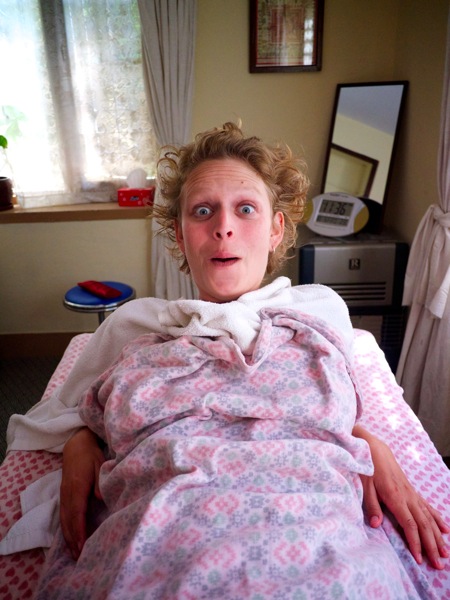
We're getting ready to fly to Japan tomorrow. I'm going to be sad to leave Nepal. It's a beautiful country with nice people. And, because we've gotten to stay in one place it's turned into a home away from home. This said, we are SO excited for Japan. And we are really happy that Joan and Steve are joining us. That's going to be so much fun. We're looking forward to bring in a very clean, polite, safe country. This isn't to say that Nepal isn't polite or safe, or even clean. But we're expecting a lot from Japan. Anyhow, we're moving right along!
Yoo Hoo Kathmandu!
We're still in Kathmandu, but we're so close to heading out on our trek. We met with our Nepal fixer Thomas Kelly, and mutual friend of August Thurmer. He and his friend Lakpah met us at our hotel to give us the rundown on our trek. We found out that we needed to gather up a few more things before we could consider ourselves trek ready. So we headed back to Thamel, the tourist center,because that is where all of the outdoor equipment stores are concentrated. These are places where you can find anything from a fluffy, down North Fake jacket, some Pseudogonia fleece long underwear, or some Nullgene water bottles. But, all the stores are bargain-able. And if you find the right shopkeeper, you can cut a good deal, especially if you level with them, reminding them that it's not really the brand name gear. But there are actual brand name stores as well. I found my t-shirt at the Mountain Hartwear store. It turned out that we needed a lot more gear than we had expected, but we wouldn't have been able to carry all of it anyhow. So, we went shopping.
That day we, also, ate at two wonderful restaurants. For lunch we went to Chez Caroline, which Thomas recommended. We were in heaven. Thomas told us that they were known for their salads and that we were safe eating there. Seth and I split a BLT and we each ordered a Caroline Salad. Man oh man. It had been a while since we were able to eat a salad, and it happened to be a great one. And the BLT was wonderful as well, with proper bacon. The only thing missing was the Crystal hot sauce for the sandwich. For dinner we went back to New Orleans, the restaurant from our first evening in Nepal. It's still beautiful, and the food is still delicious. But, I don't think they know what a smoothie is, or perhaps their blender broke. The first time Seth ordered a milkshake, but ended up with chocolate milk, and this time he ordered a fruit smoothie, and ended up with fruit juice. Both were nice options, but not what he had ordered. Hmmm...
The next day our planned part of Nepal began. We were picked up from our hotel by Lakpah and taken back to Budah Stupa (maybe called Budahnath in another post), that's the place where the Buddhists circumambulate around the stupah in prayer. It was a very different experience from our first visit. The first time it was nice to just take in the scenery and make conjectures on what was going on. This time, we were given a wealth of information from Thomas who explained everything we asked and more. And he speaks Nepali, and loves to shoot the shit, so he has a lot of friends anywhere he goes. It's neat to watch him interact with the locals.
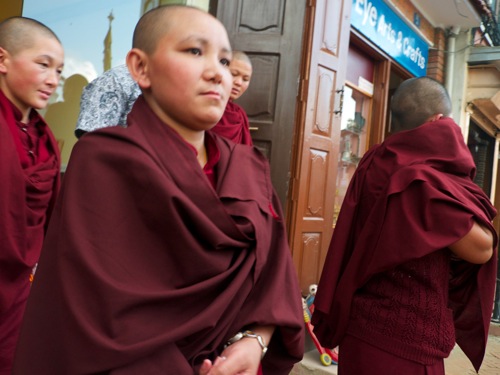
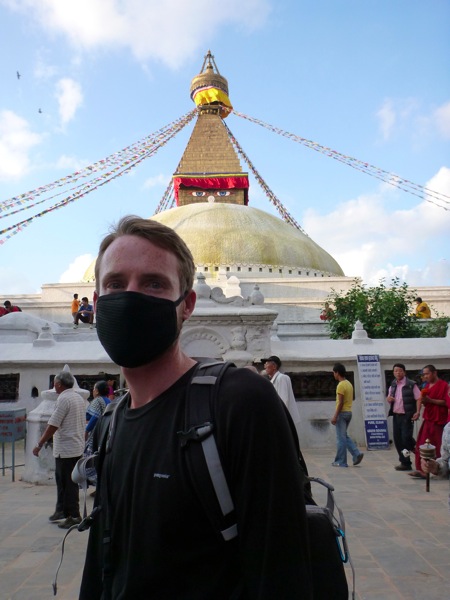
Very close to the Budah Stupa lives Pema, Thomas's foster daughter. She runs a sort of clinic where they have herbal medicines, acupuncture, and massage therapy. Thomas had set up a massage for Seth and I. It was so wonderfully welcome. And we both agreed that it was probably one of the best massages we'd ever had. Following our massage, we found our way upstairs to the kitchen where we would help to make momos. Momos are Nepali dumplings. The are delicious. We made chicken momos and potato momos. They were served with a peanut and tomato sauce that was quite tasty.
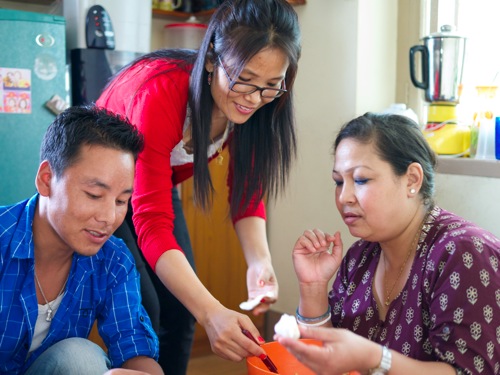
After that, we walked with Lakpah to Pashupatinath, which is a Shiva Temple complex. So, we were switching from Buddhism to HIndu. The feel of both places were quite different. At the buddhist temple there was a warm happy feeling and an overall sense of love. Though the Shiva temple complex was pretty, it was quite dirty, filled with monkeys, and absent of people. There were people there, but way less than at Budah Stupa. From the Shiva temple we made our way down to the Bagmati river where there are cremation ghats. The hindu people have a tradition of cremation, but it involves the holy river as well. First, they wrap the loved one in a cloth and bring them to the river. They strategically place the body on a ramp that leads to the river so that the person's feet are in the water. They allow the river to wash the deceased's feet for some time before lifting them from the water to rest them on a funeral pyre, where they set a butter lamp inside the mouth where the fire will start to burn. Once the person is fully cremated their ashes are scattered in the river. We were able to see different stages of this ritual during our visit. I think it is a nice way to lend some closure.
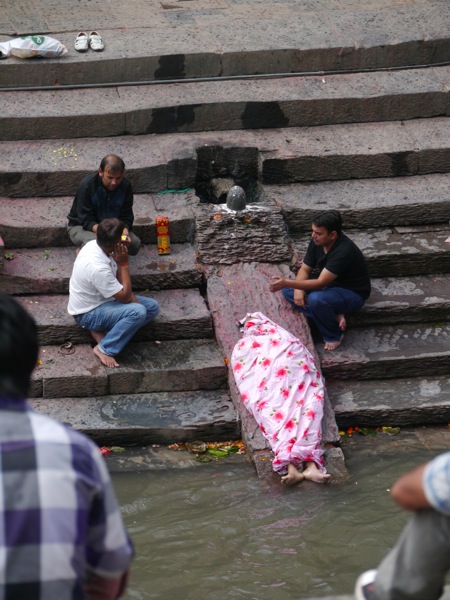
BUT, there's a reason why there is a problem with water contamination in India and Nepal. HIndus use the rivers for way too much. I've just mentioned what they do with their deceased, and on top of that they bathe, wash clothes, potentially go to the bathroom, and throw their trash in this holy river. The water is horribly polluted. That part is hard for me to digest, and that is why I will not touch a river near human habitation.
After the ghats we went over to a hospice center run by Mother Teresa's nuns. It was a really nice place for the elderly who were not able to grow old in the care of their families. It was very nice to see, but you should not picture an old folks home like in the US. It was quite different from that. But the elderly here are quite different from in the States. They are a functioning part of the community until they no longer can be. These old ladies are tough. The place had good vibes.
